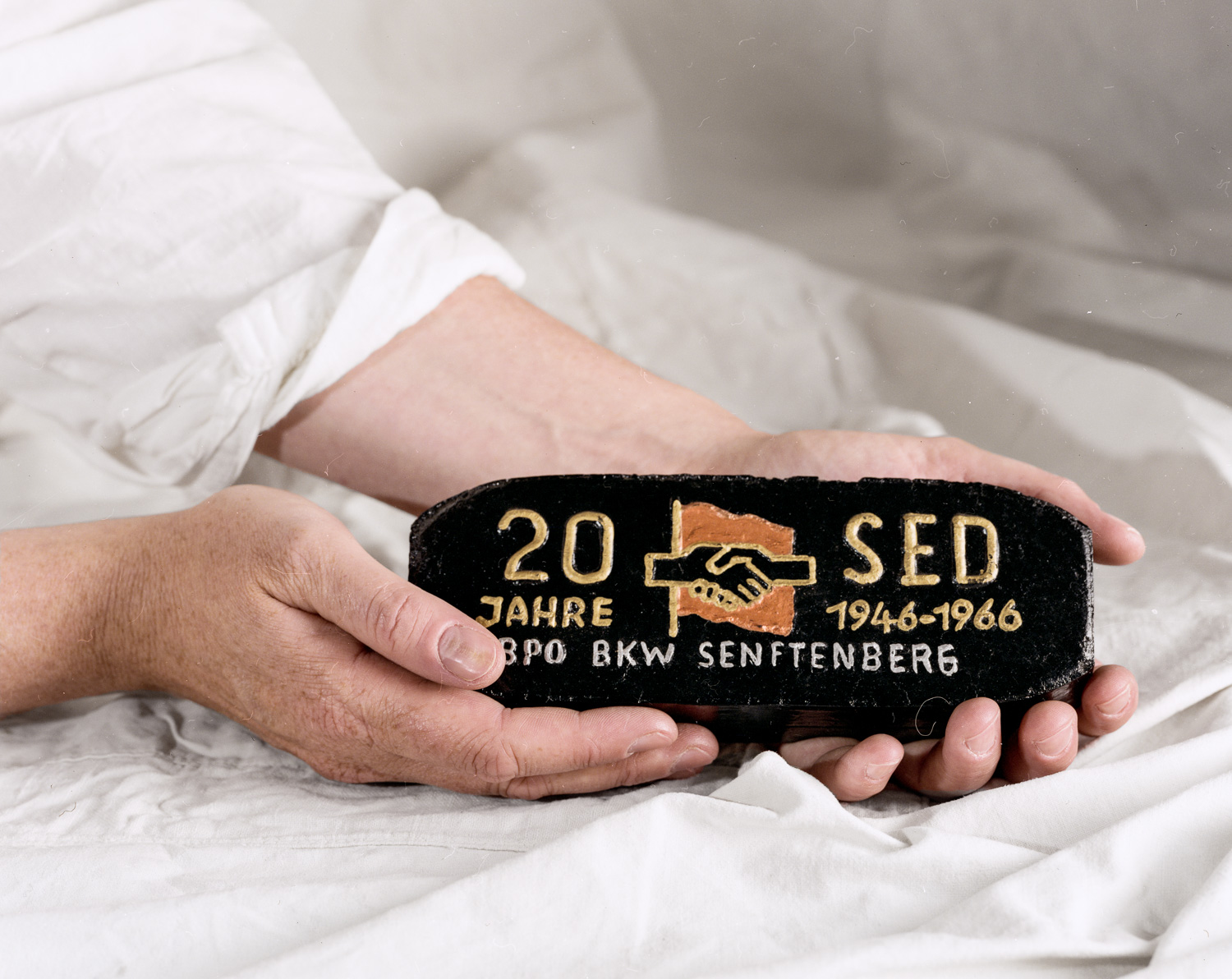
A commemorative coal briquet , or perhaps an award of some kind?
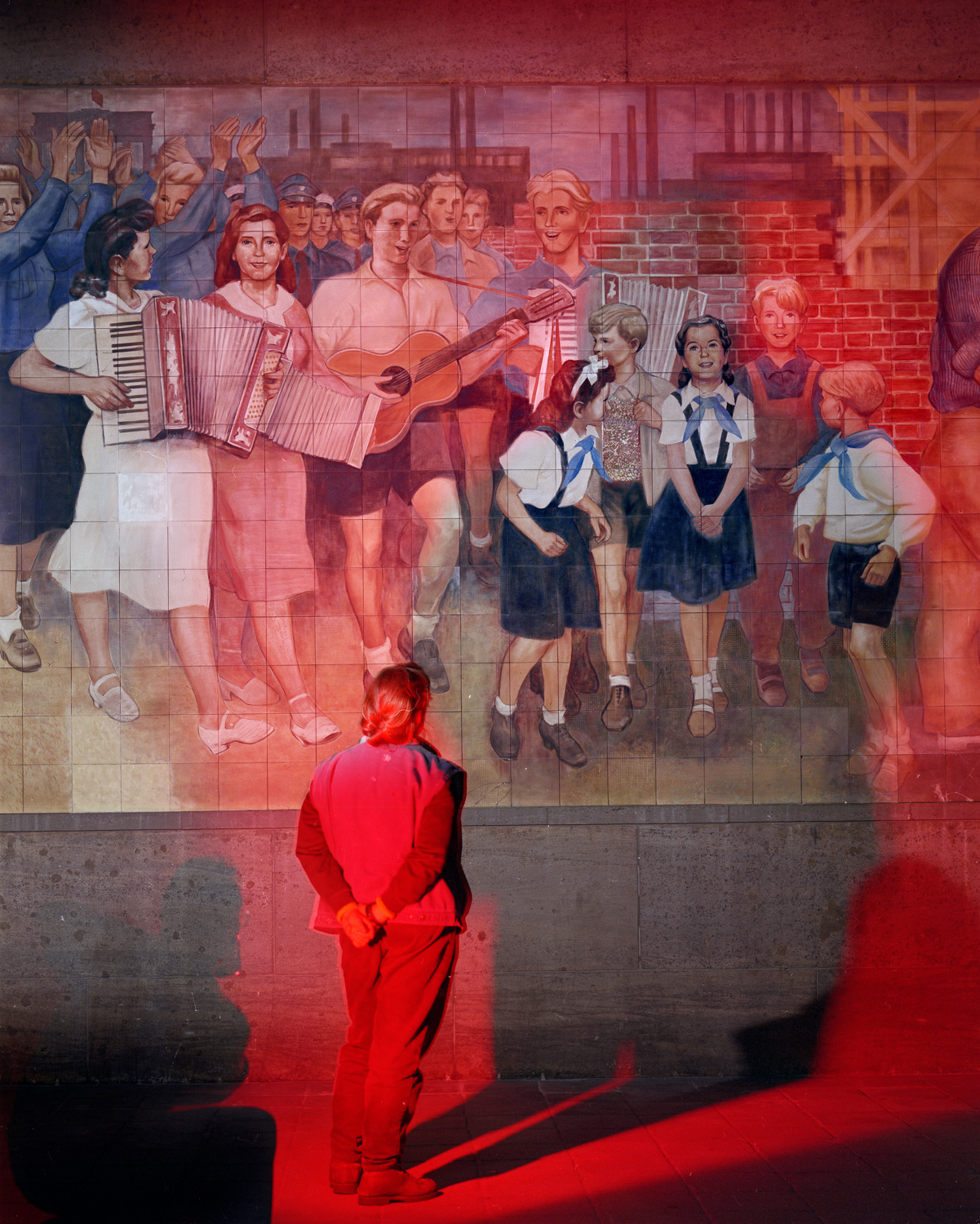
This is my wife Judy Settle standing before a mural by Max Lingner (1952?) which is on an exterior wall of Detlev-Rohwedder-Haus in East Berlin. This building was the location of the Air Ministry in the Nazi period, and later the Treuhand which was the overseer of privatization during unification. Berlin 1991.

A dramatization of a commonly seen bit of grafitti, grafitti seemed to be a blood sport and there was very little "Art" graffitti to be seen. It was always about territory and politics andvile nationalistic messages were common (Auslander Raus - foreigners out!)
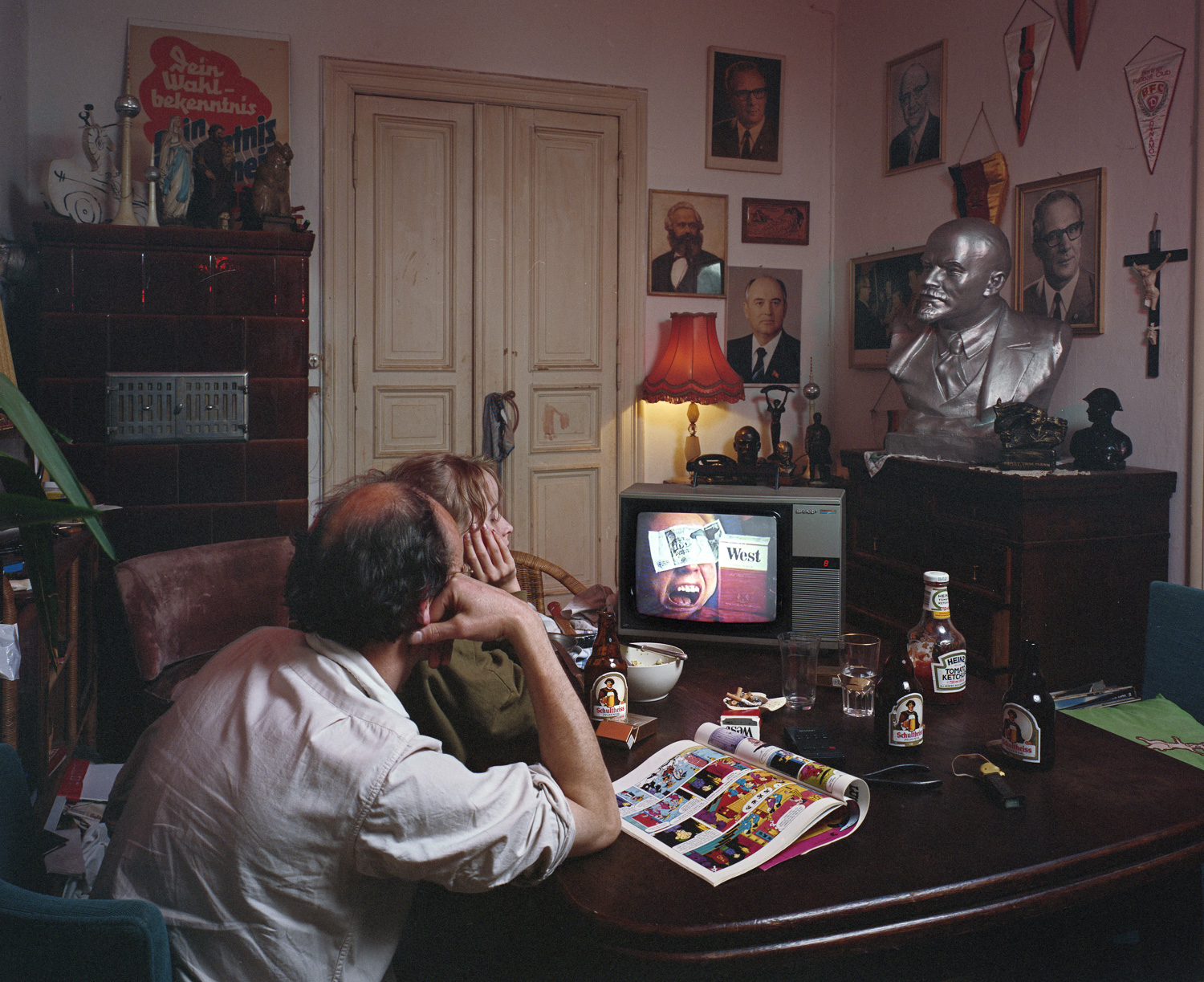
Of course, this is a set up. The montage on the television refers to the "Go wild west" slogan attached to the cigarette brand, the man with the money pasted to his forehead is an illustration from a magazine article discussing the economic changes taking place during the unification of the two German nations. There are many ways to look at the change, it could be thought of as a purchase of one economy by another as well as other things. The stuff on the wall is pretty well all east german nostalgica and kitsch put up for the shot. 1990 Berlin.
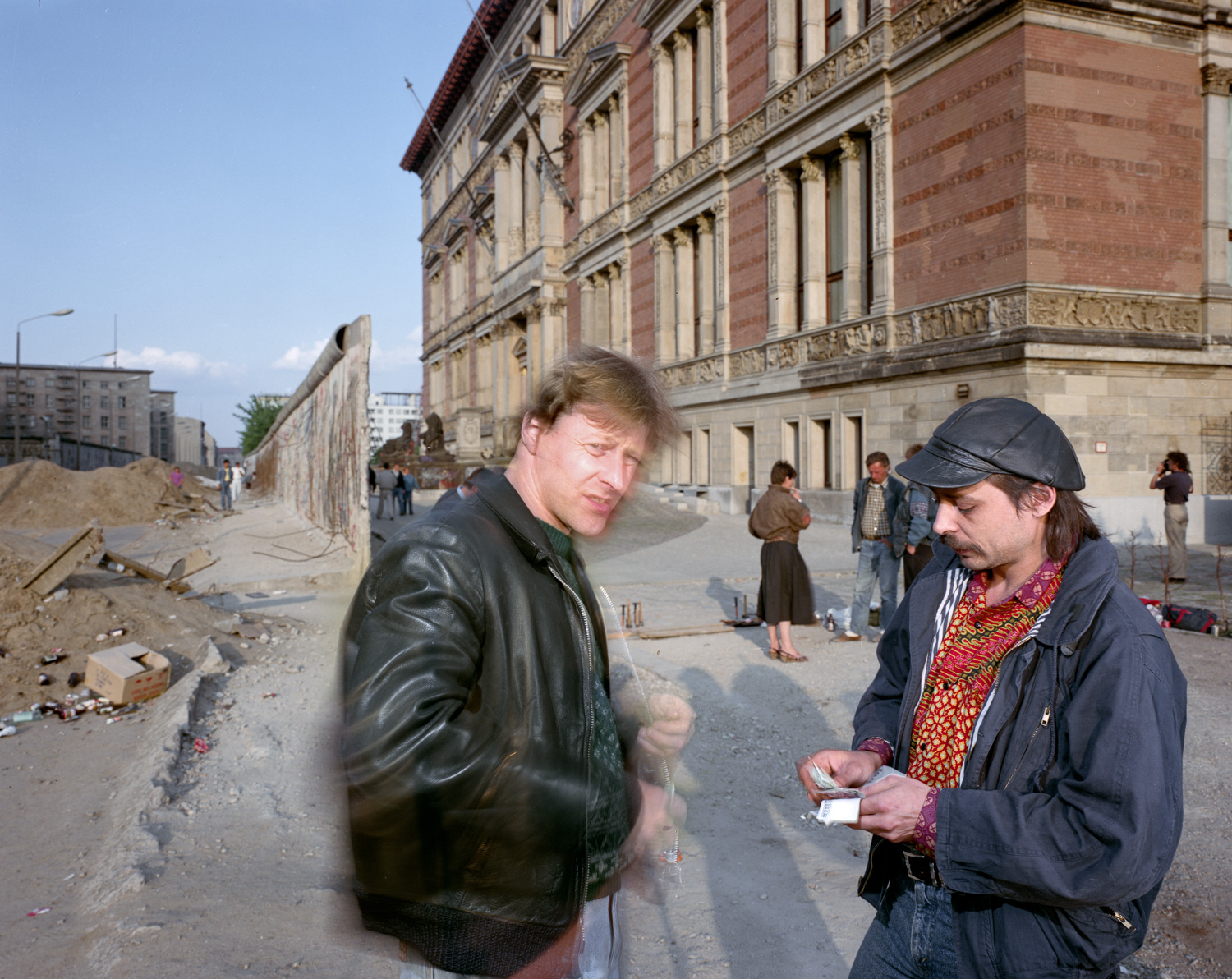
A little docudrama - two men changing money near the wall behind Martin Gropius - Bau. Berlin 1990.
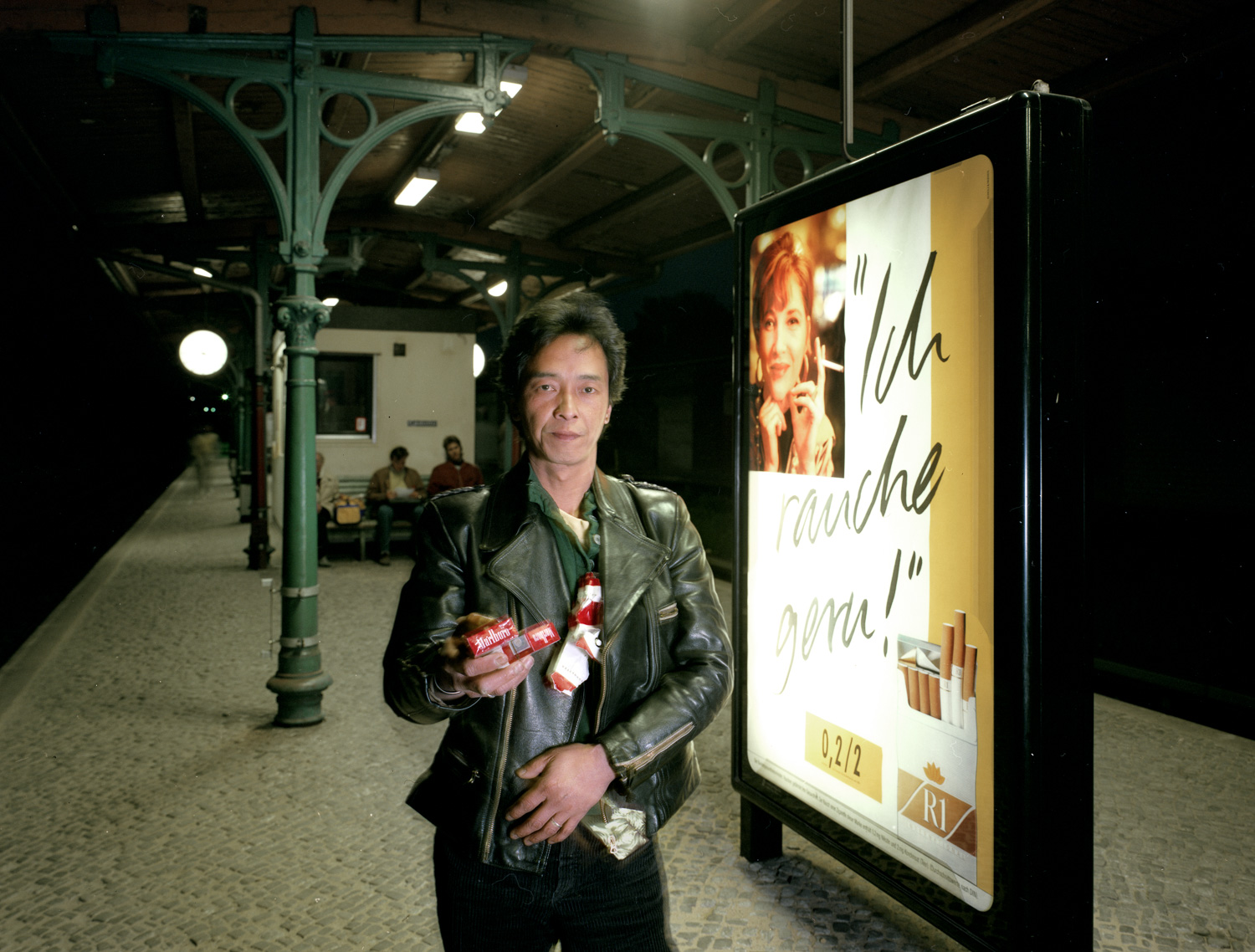
A North Vietnamese unlicensed cigarette vendor. When the DDR collapsed there were many Vietnamese people who "fell between the cracks" . Not German, not citizens and visibly different. This man is modelling for me for a fee.

These are people acting out a an often seen role - beggars from the East Bloc who are not Germanwho represent the kind of people often blamed for many social ills at this time as people from the east bloc migrated west. I am paying them in this shot to pose for the next picture. There was a lot of media BS about the perils of people like this and I wanted to subvert that by setting up a shot to declare - at least in part - the falsity of it.
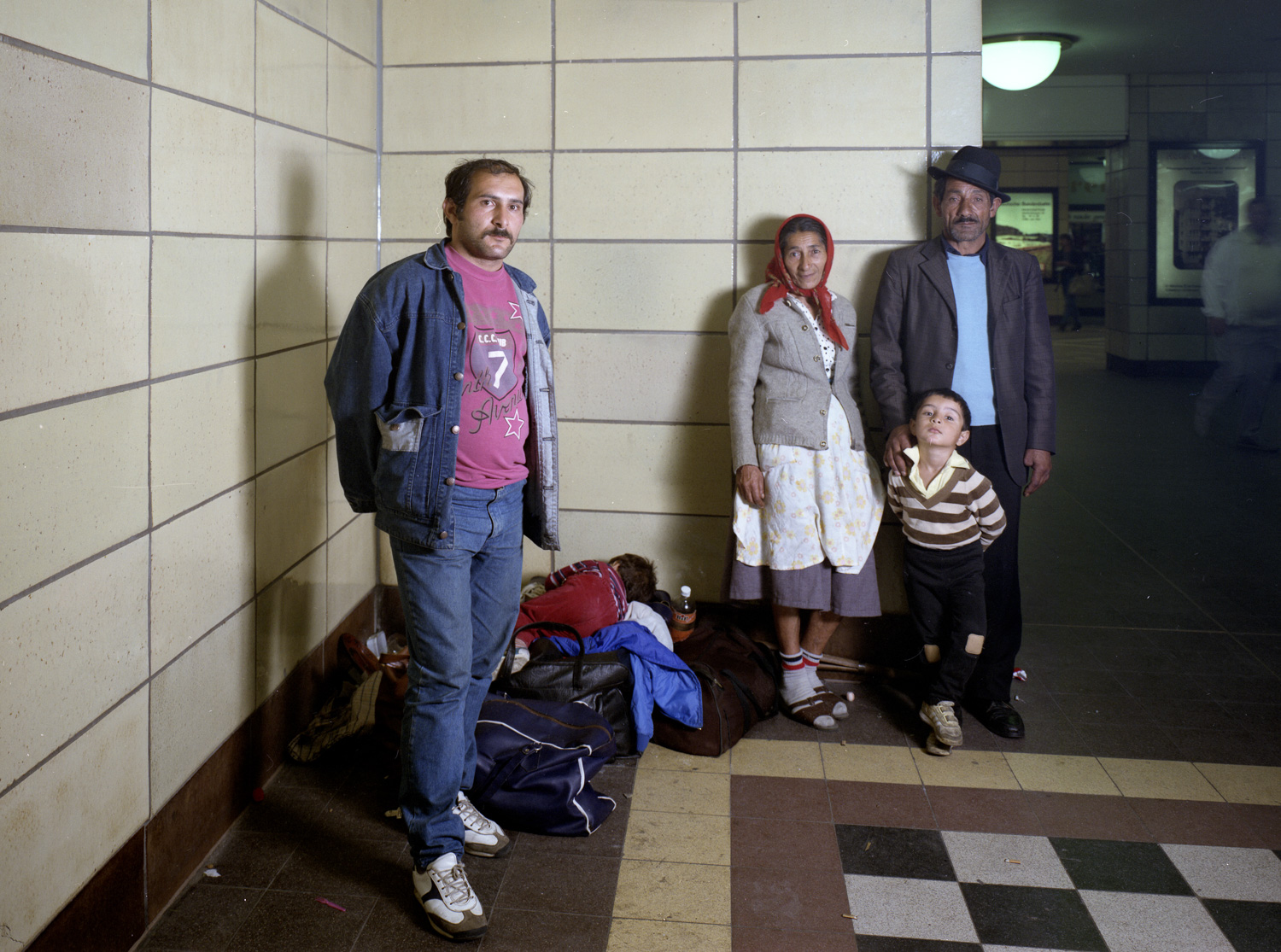
The family is now shown without myself as director of the scene.
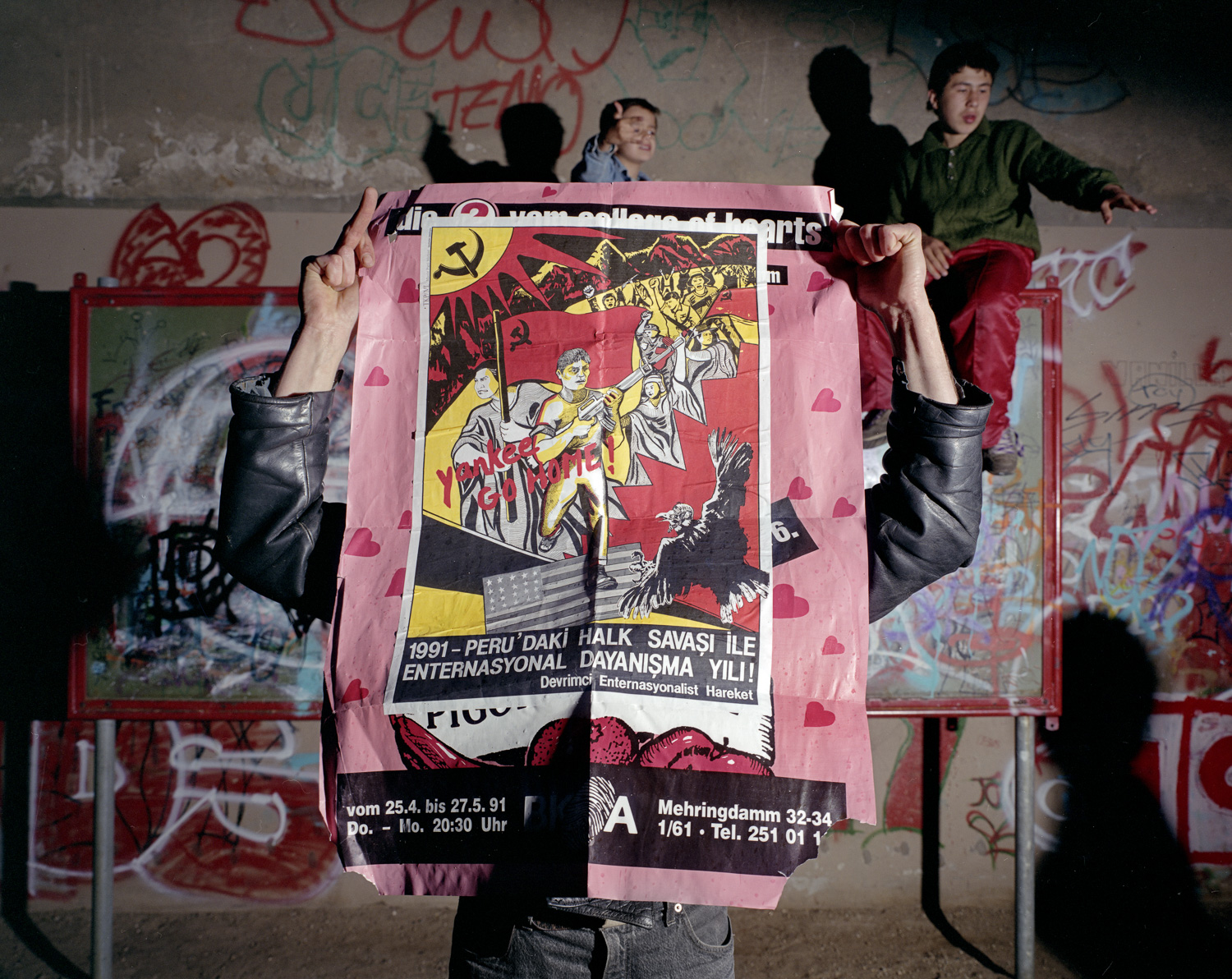

This is not real, but it is based on an event I witnessed. These are actors. One evening I saw an awful beating which I could do nothing about and that I was quite distant from. I took pictures of it but the images are useless - they were soccer toughs - probably drunk - and like the cowards they were attacked in a group and kicked the daylight out of some poor man and ranaway. This picture was/is an aide memoire and an attempt to wrestle with that.
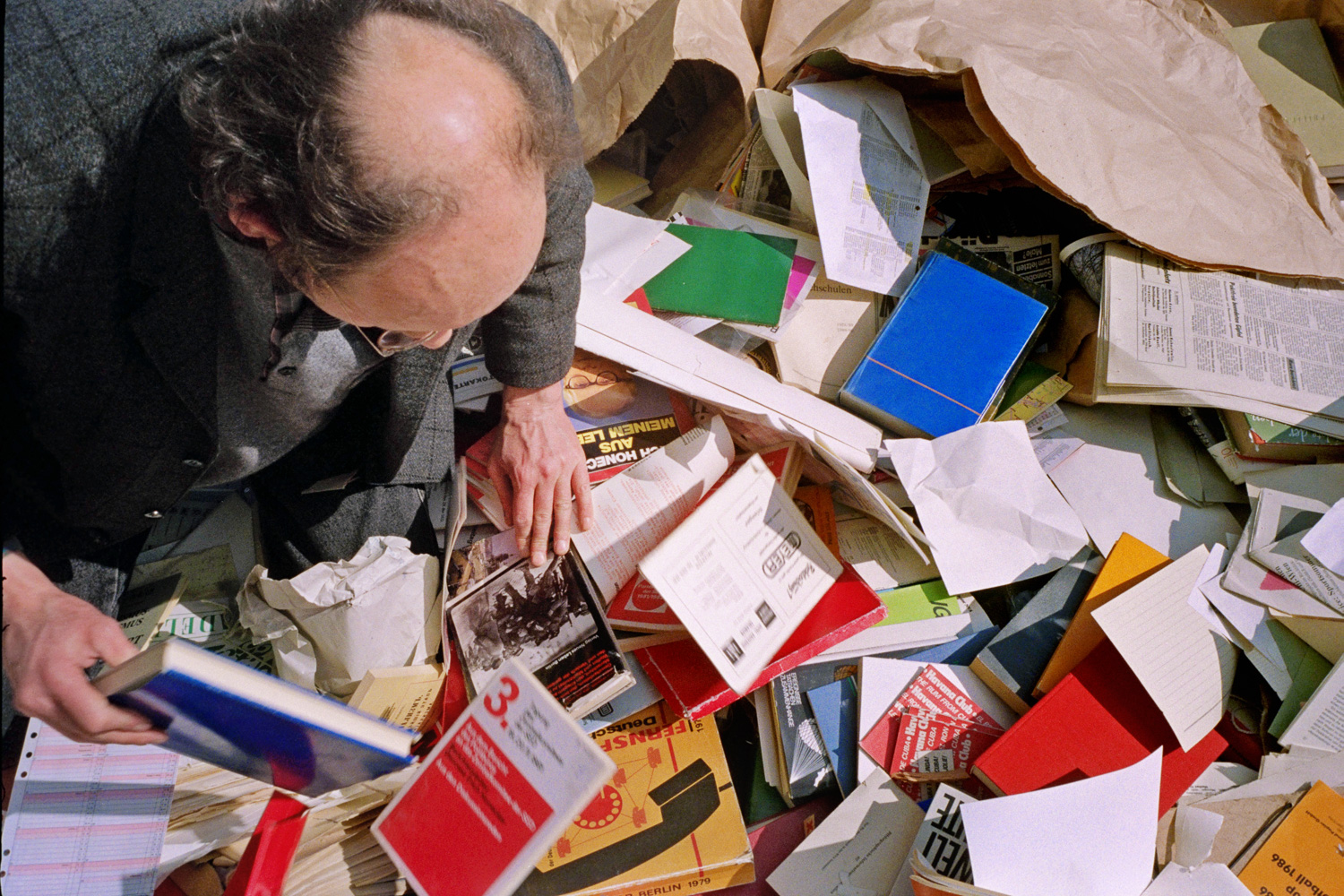
My friend David was a "junk remover" permitted onto the Stasi headquarters at 15 Normanenstrasse and I accompanied him as an assistant with a camera. This image shows David knee deep in a dumpster full of bureaucratic junk, forms, photographs and a wealth of other interesting things.
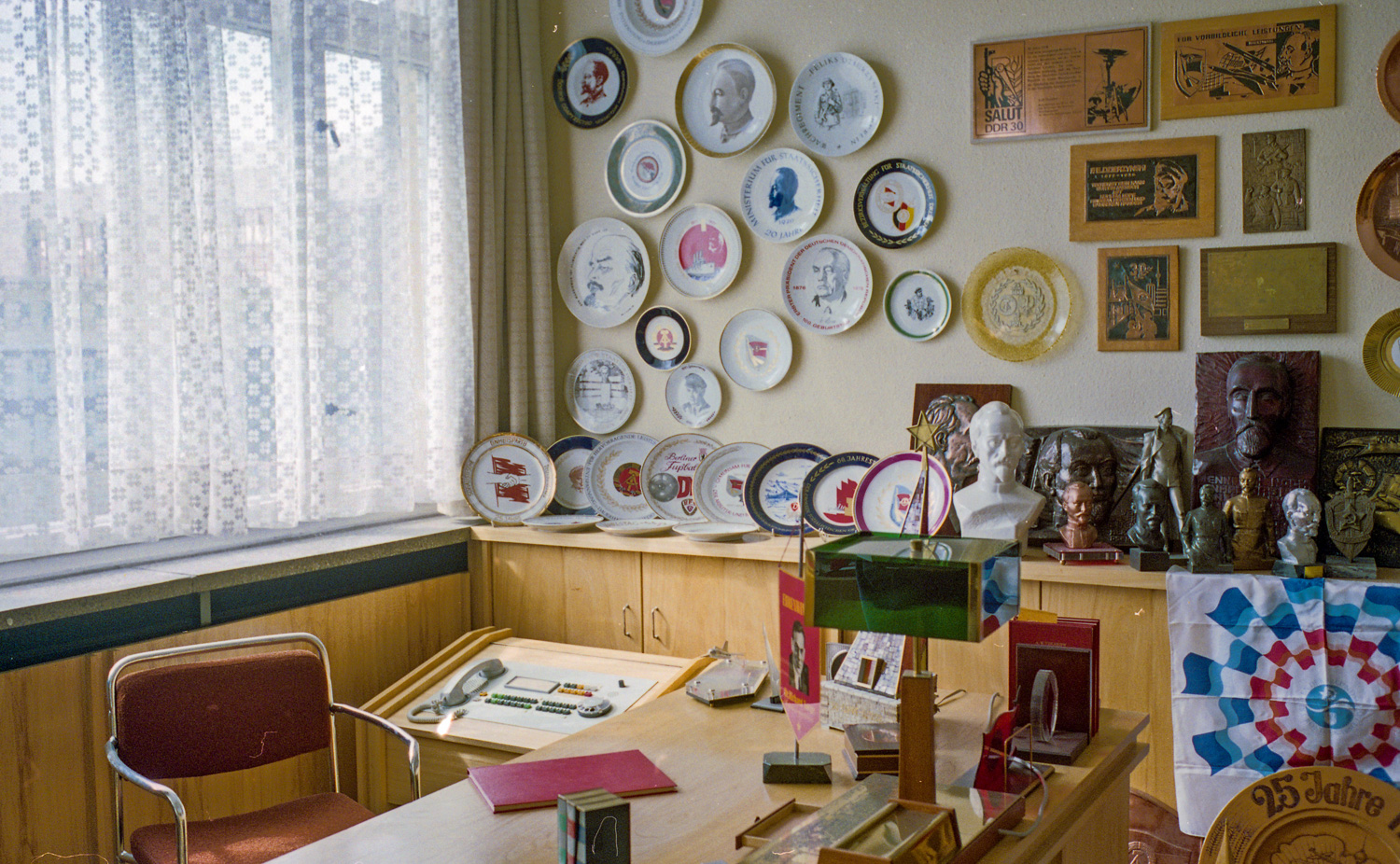
The desk of Erich Mielke Minister for State Security DDR.
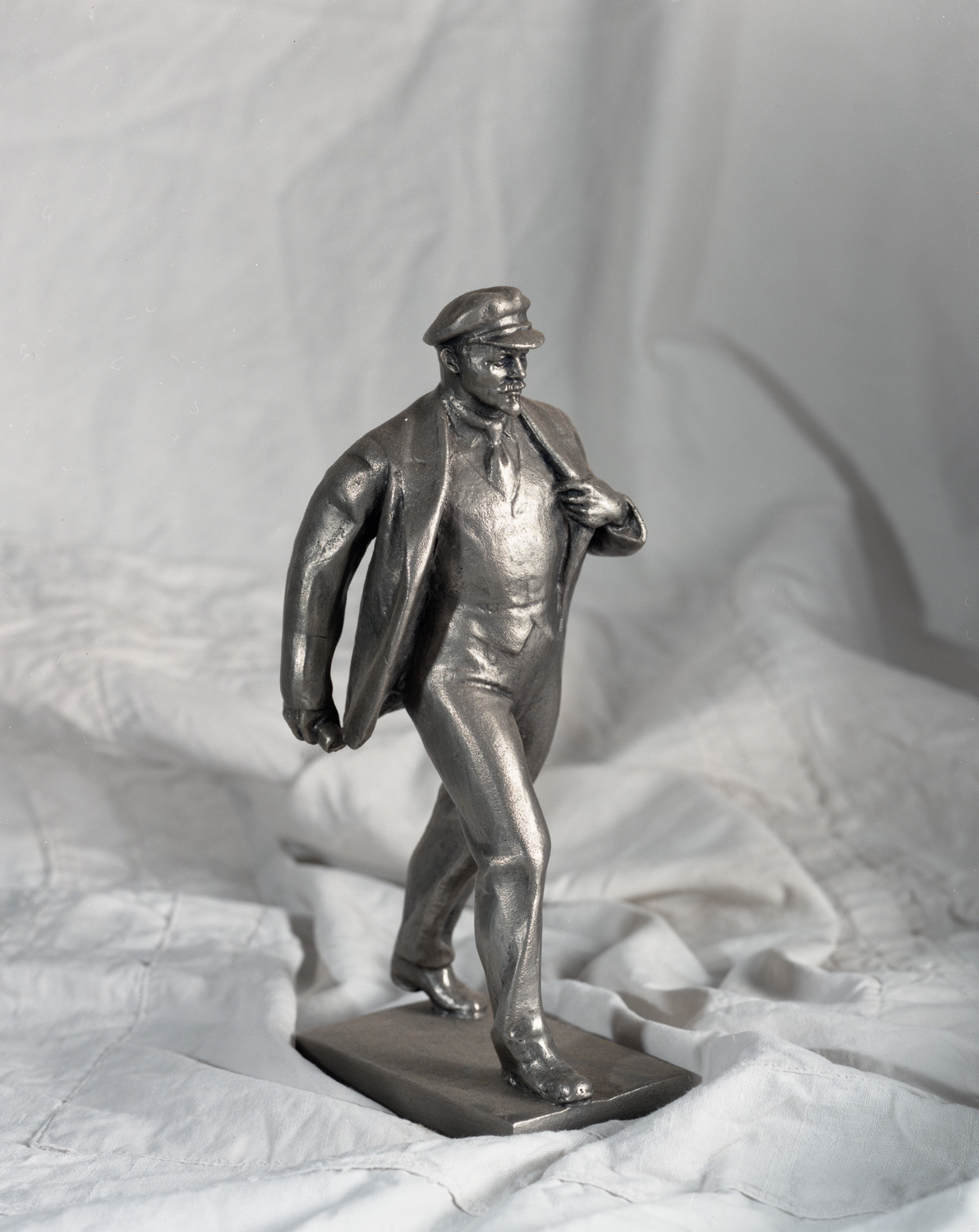
"What is to be Done?" Erich Mielke, the last head of the Stasi , the East German Ministry for State Security, had an office filled with mementos, ceramic figures commemorative objects and awards related to his office. I managed to photograph a few . . .I was amazed at the Minister's poor taste in bric a brac.
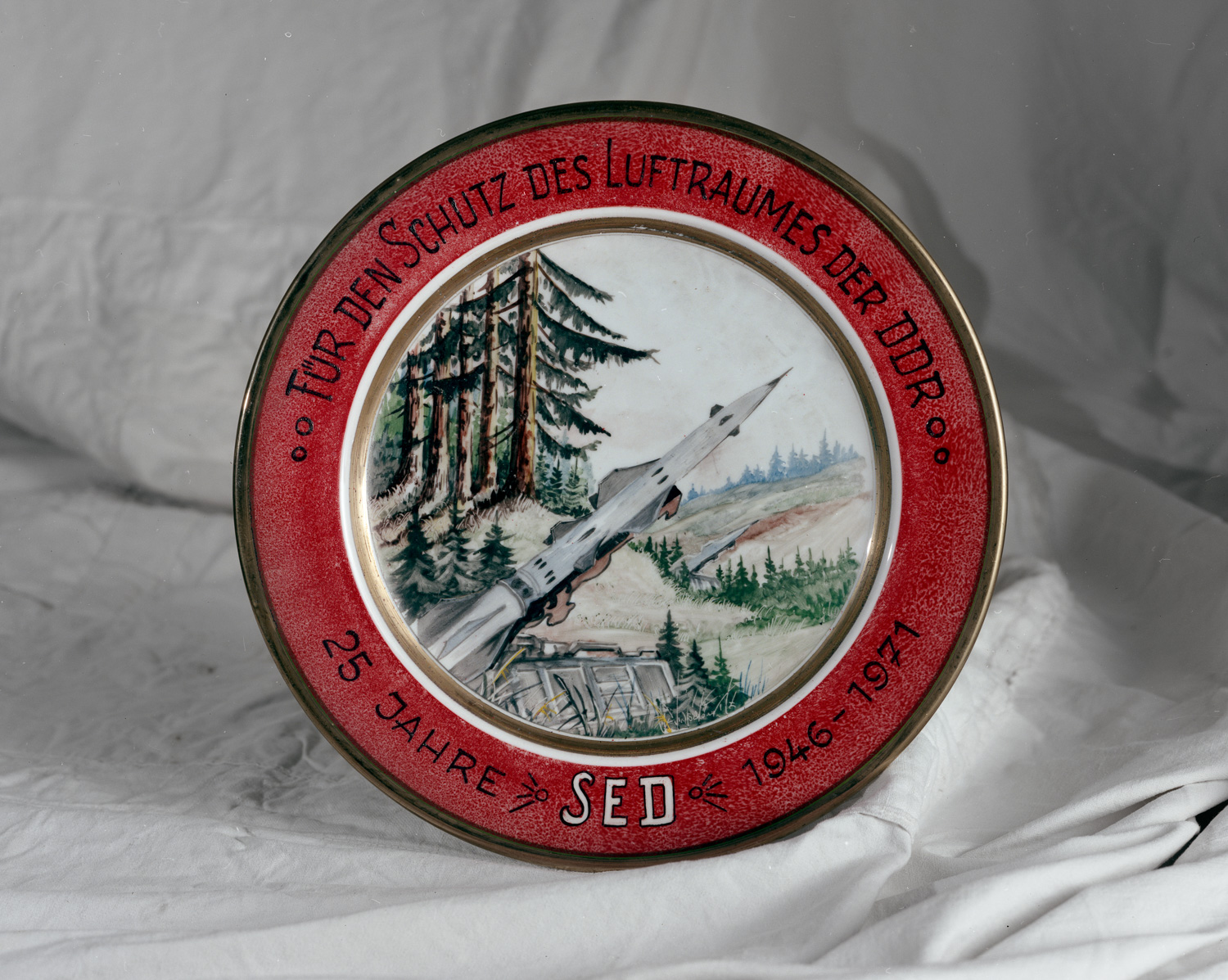
Another bit of fine ceramics from the Minister's office. For the protection of the airspace of the good old DDR.

More stuff I saw displayed in Erich Mielke's office. The medallion image is of Felix Dzerzhinsky the founder of the Russian Cheka and a defender of the necessity for a strong security apparatus. A motto associated with him is "trust is good, but control is better". No context or inscription, I handled it gently and somewhat fearfully. !990 , Normanenstrassse Berlin
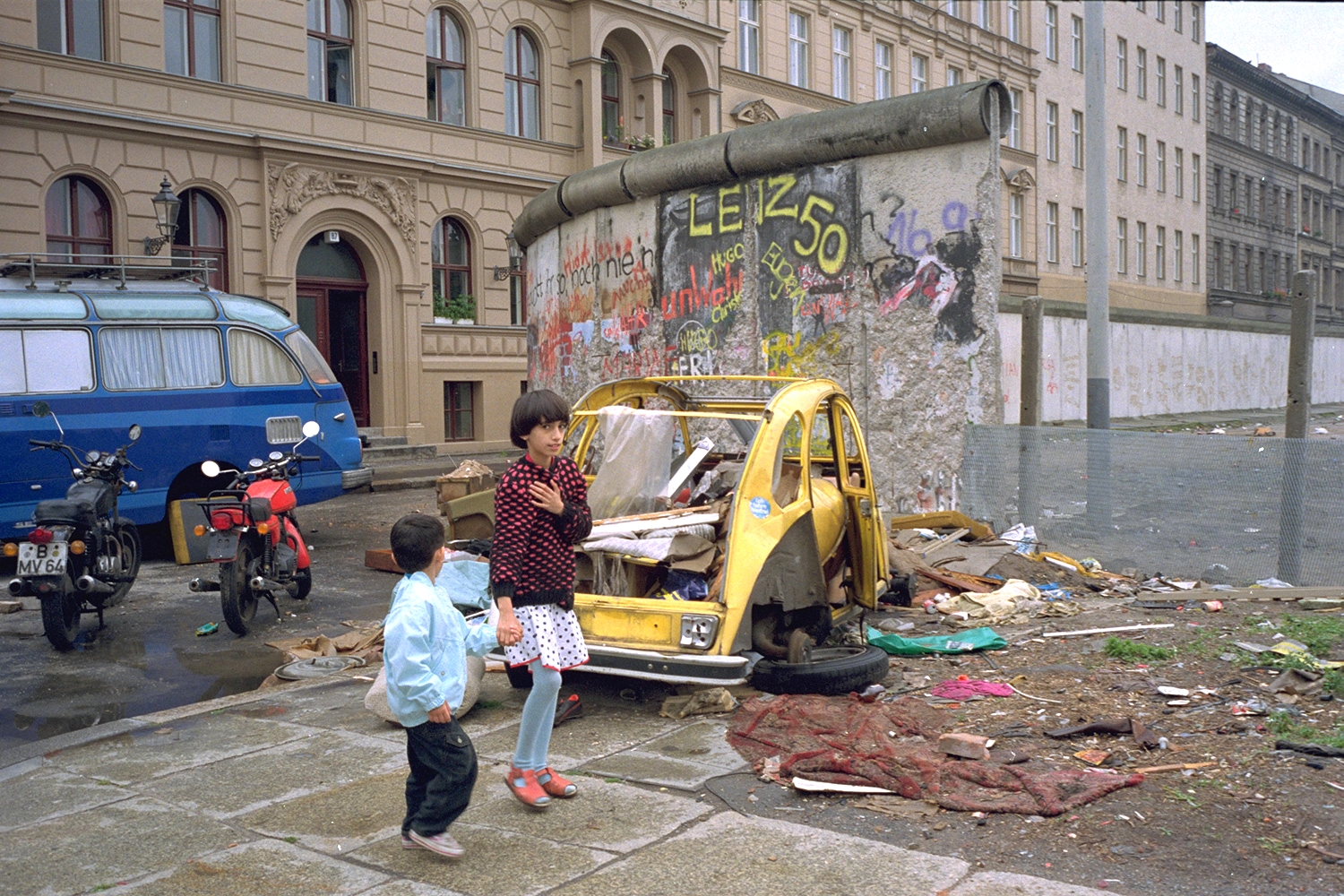
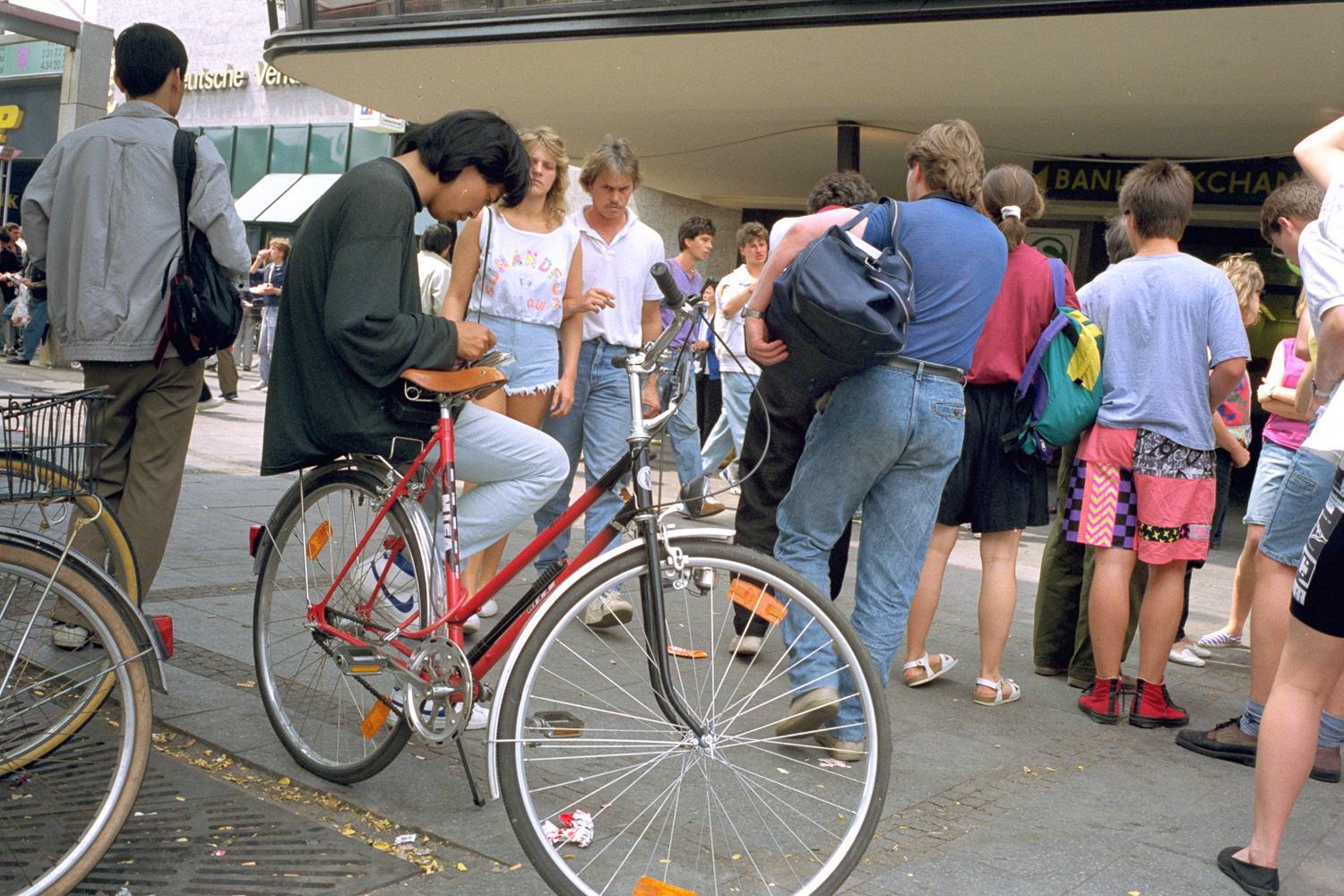
Near the Zoo train station downtown West Berlin.This man is selling cigarrettes and changing money.
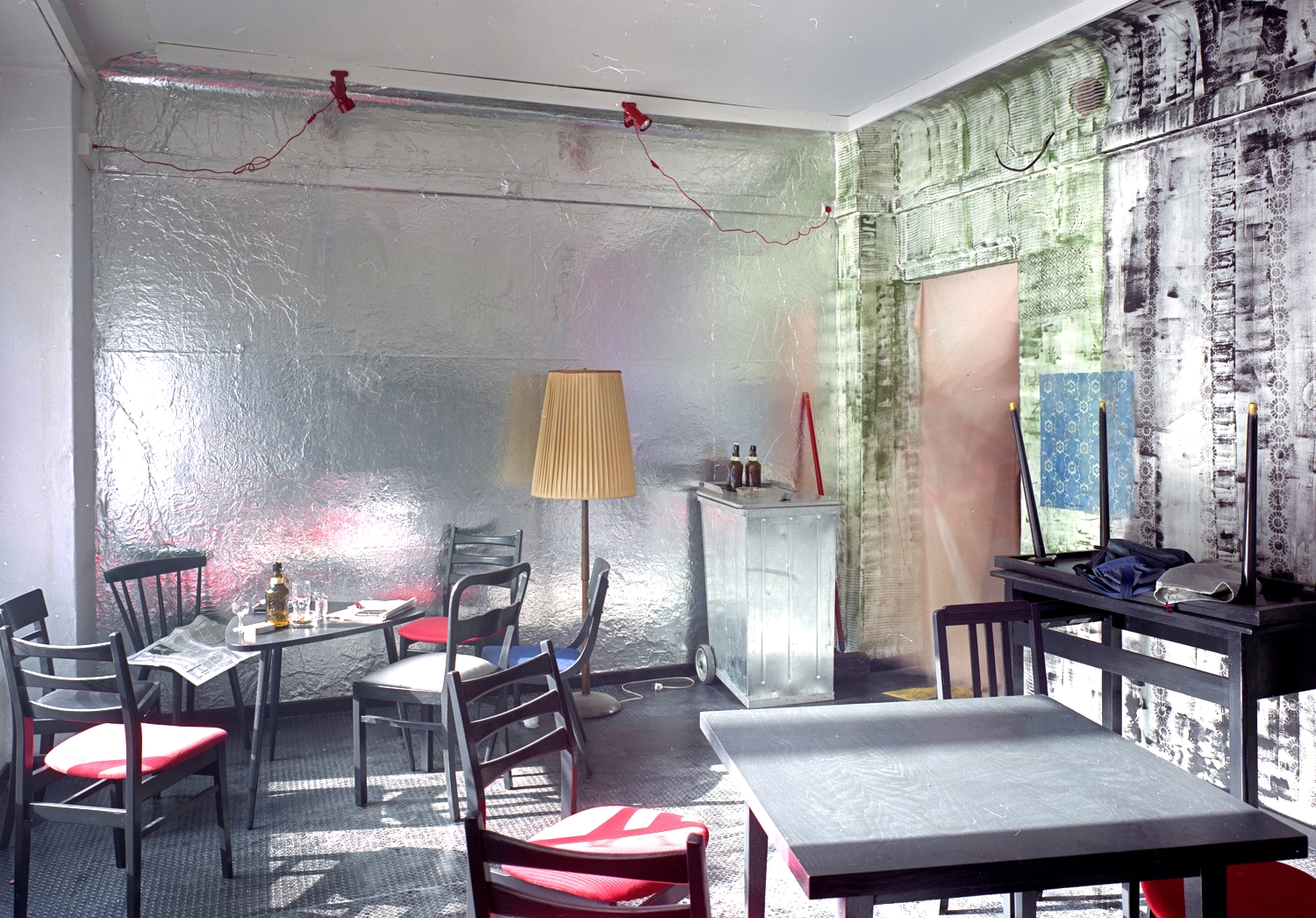
"Cafe" at the Brot Fabrik (bread factory) studios in East Berlin , 1990
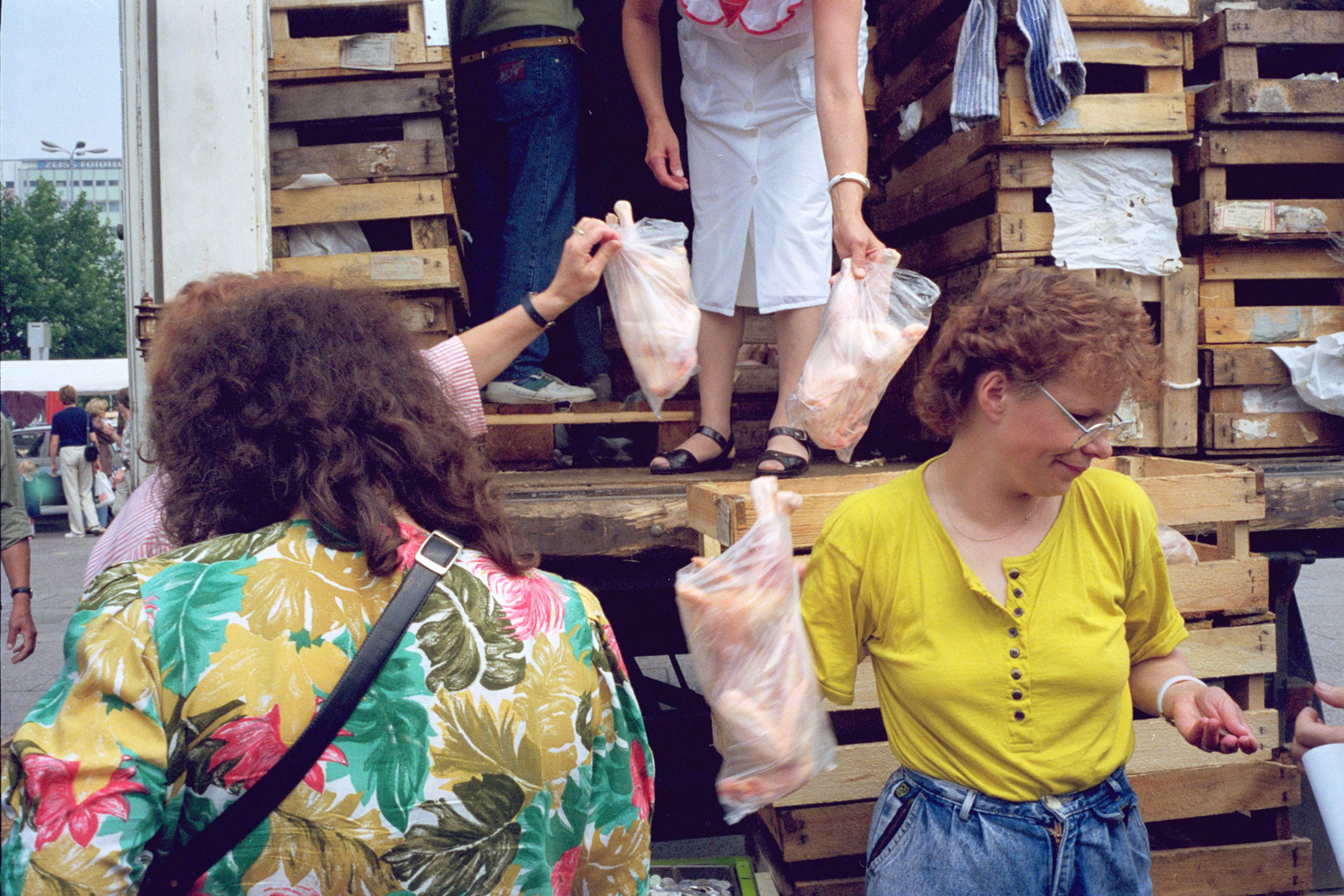
Alexanderplatz, East Berlin, late June 1990. Chickens for sale. In all likelihood these poultry were stolen from their intended retail outlet and diverted to Alexanderplatz where they could be sold for West German cash. The grocery stores win East Berlin were pretty well empty, not because of shortages but because of the impending obsolescence of East German currency and the effect that had on commerce.
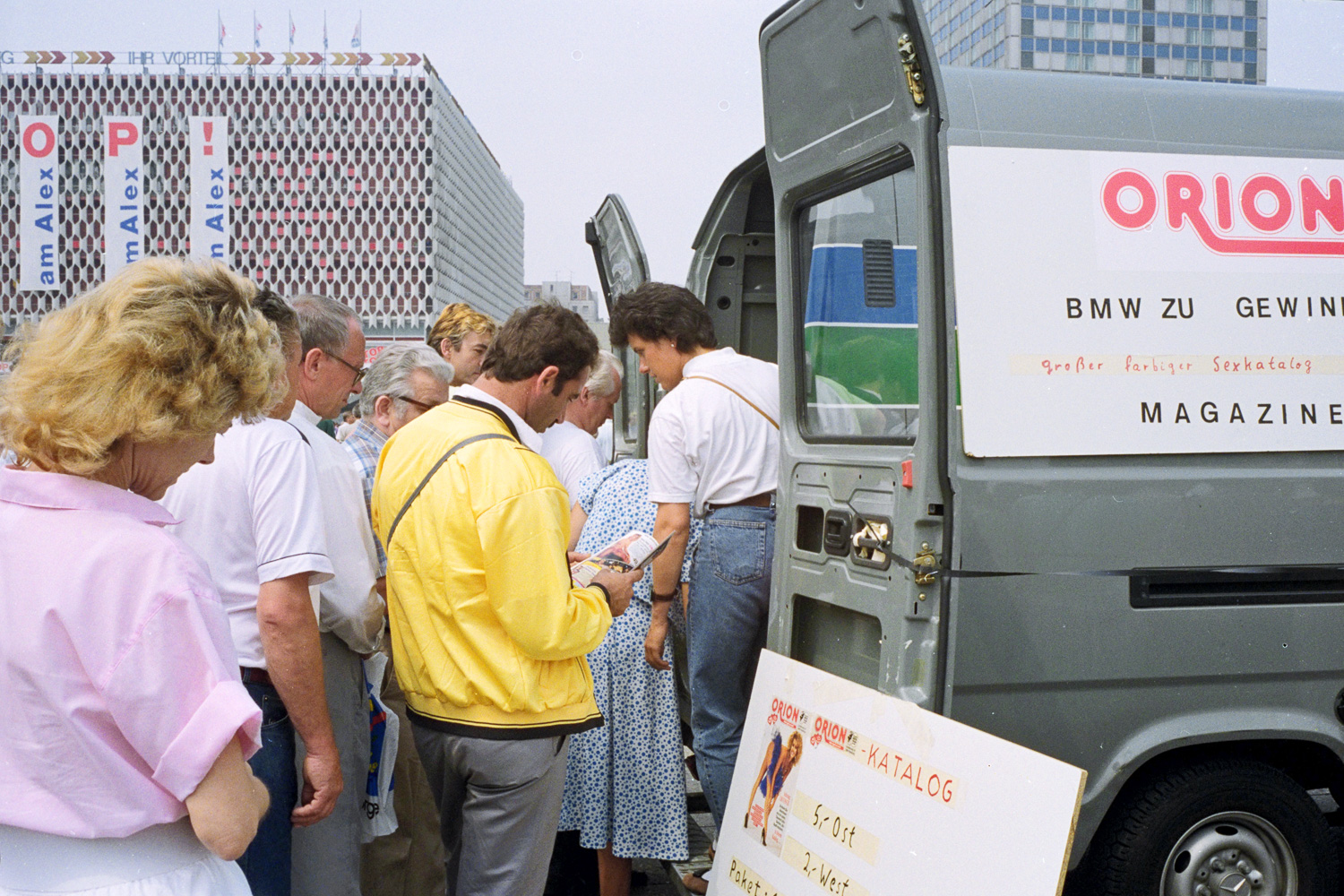
Alexanderplatz, East Berlin. Late June 1990. Pornography sales out of the back of a van.
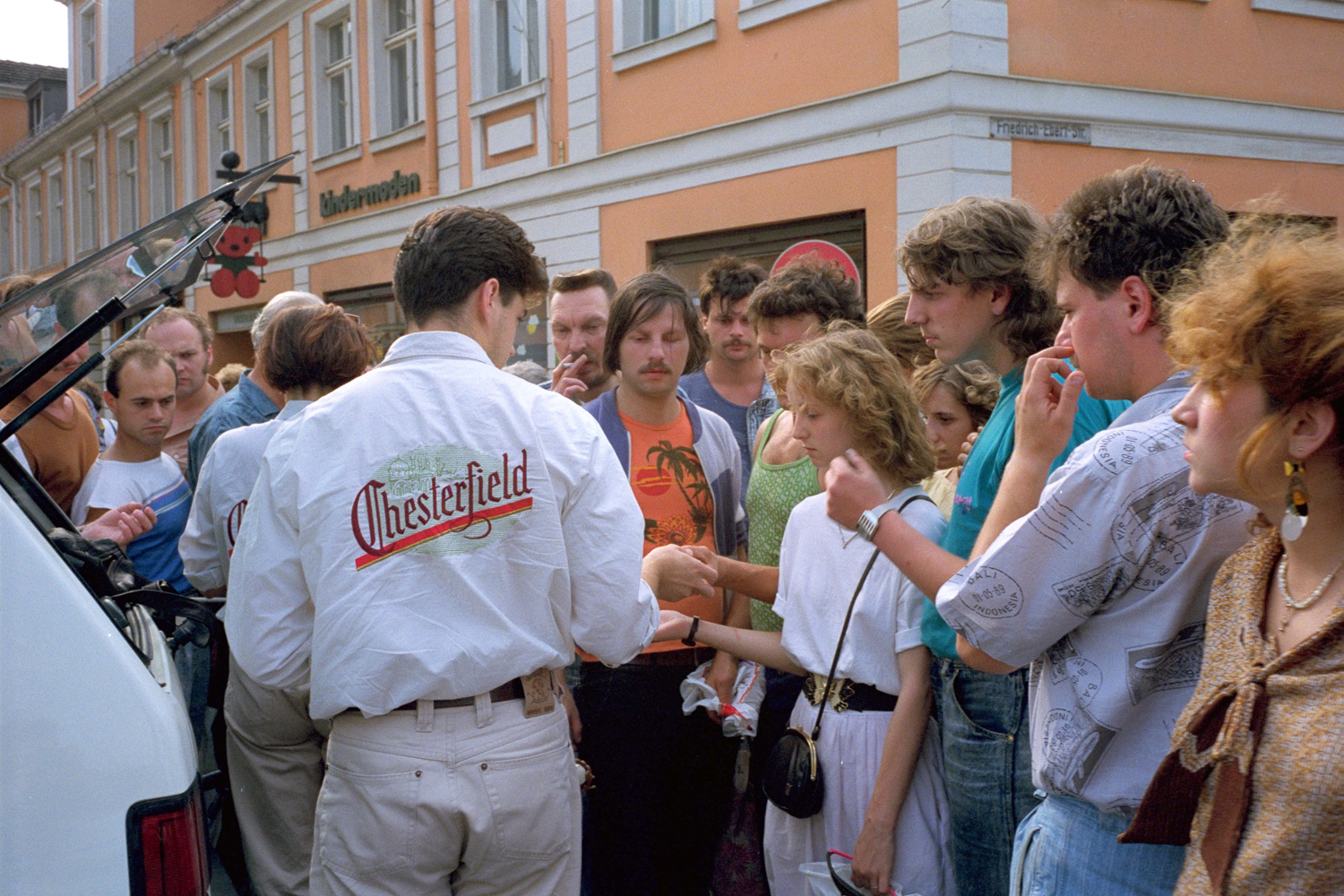
Cigarette salesman and Van - Potsdam. The introduction of new products to the Eastern market seemed to be especially visible in the street level campaigns run by Cigarette companies, porn and the banks.

Street corner with a kiosk poster I associate with 1990. West cigarette advertisements often appeared alongside the motto "Go Wild West".

Caol briquets dumped for later use as heating. Coal is an important fuel here.

S-Bahn Station Schonhauser Allée Prenzlauerberg East Berlin.

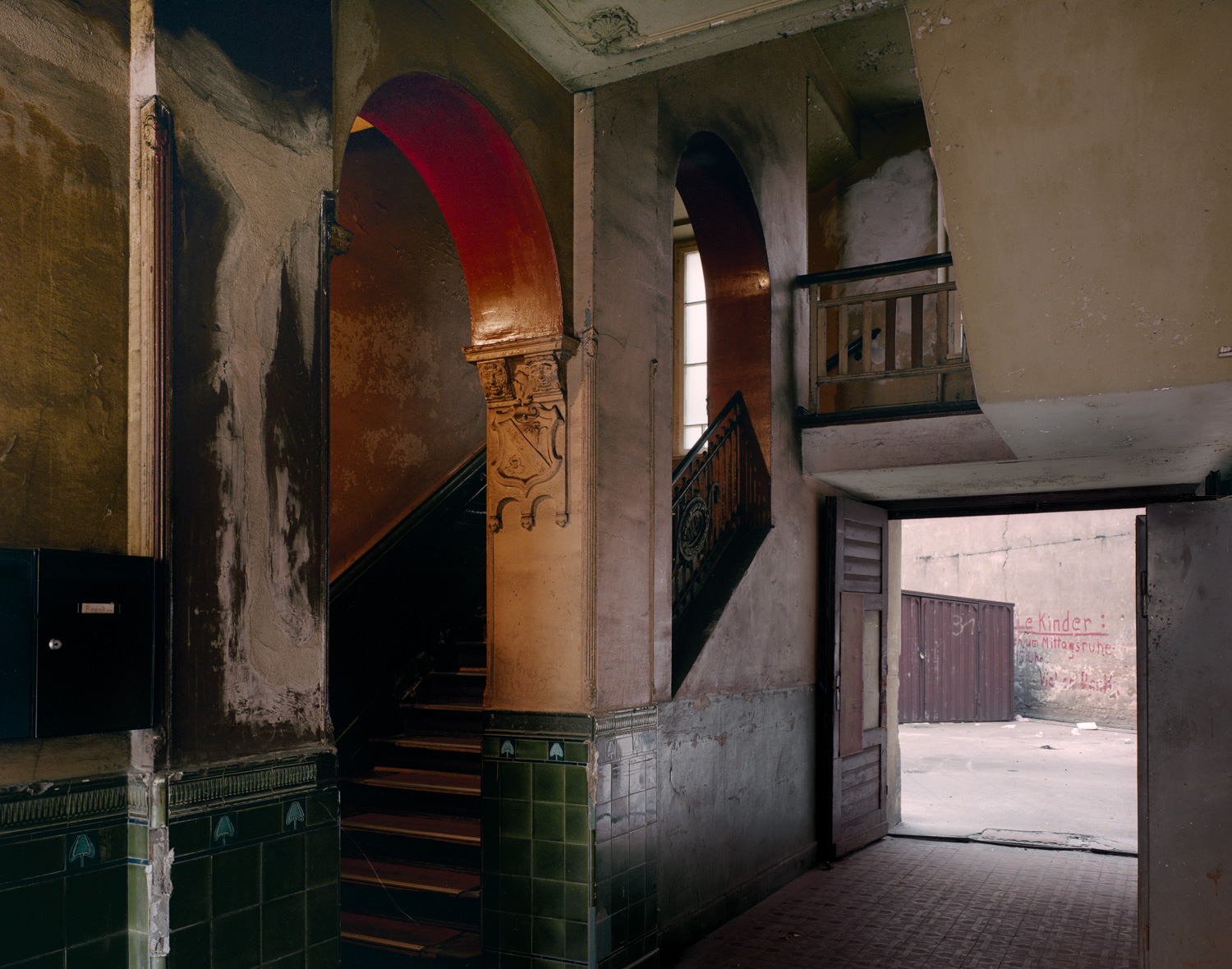
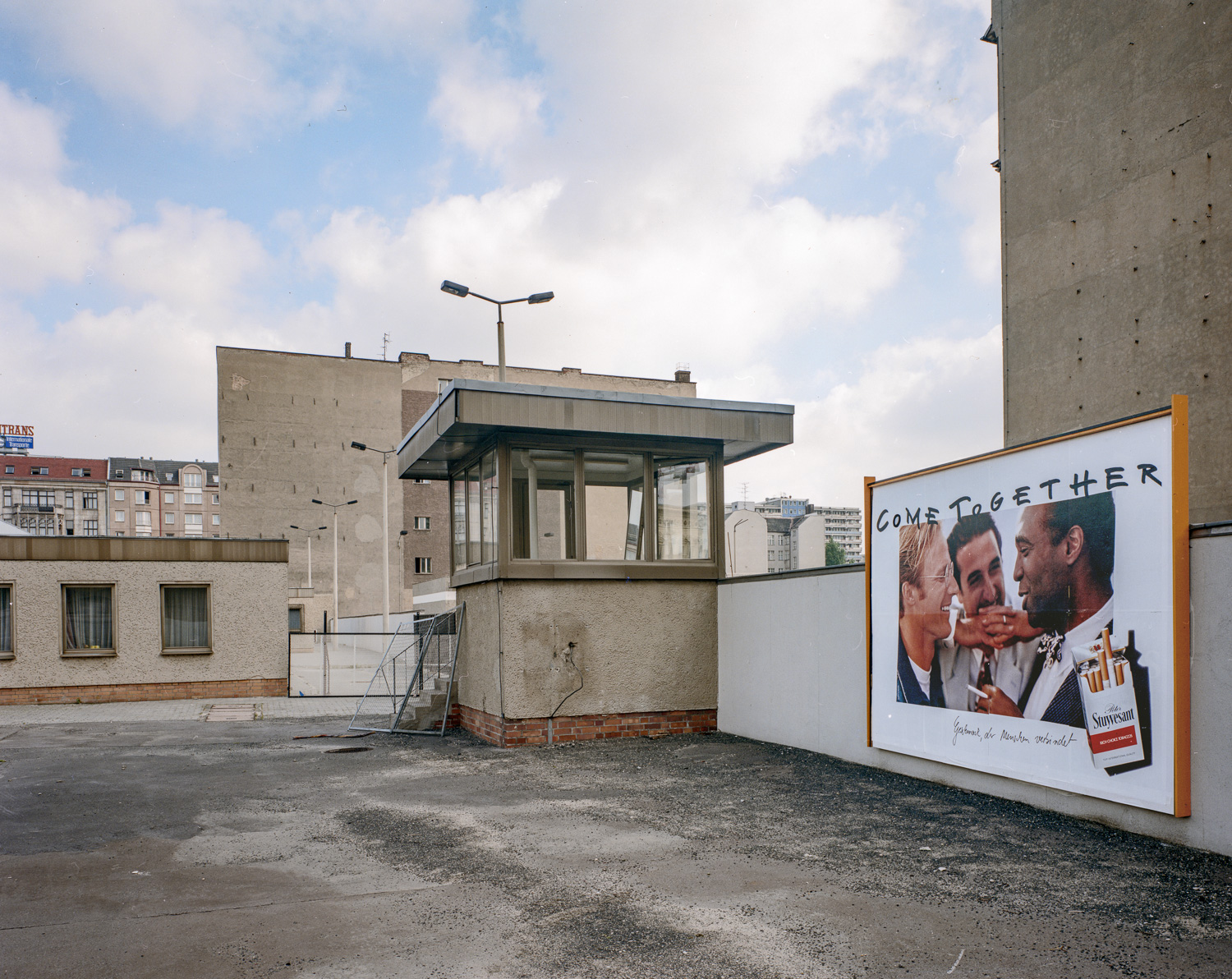
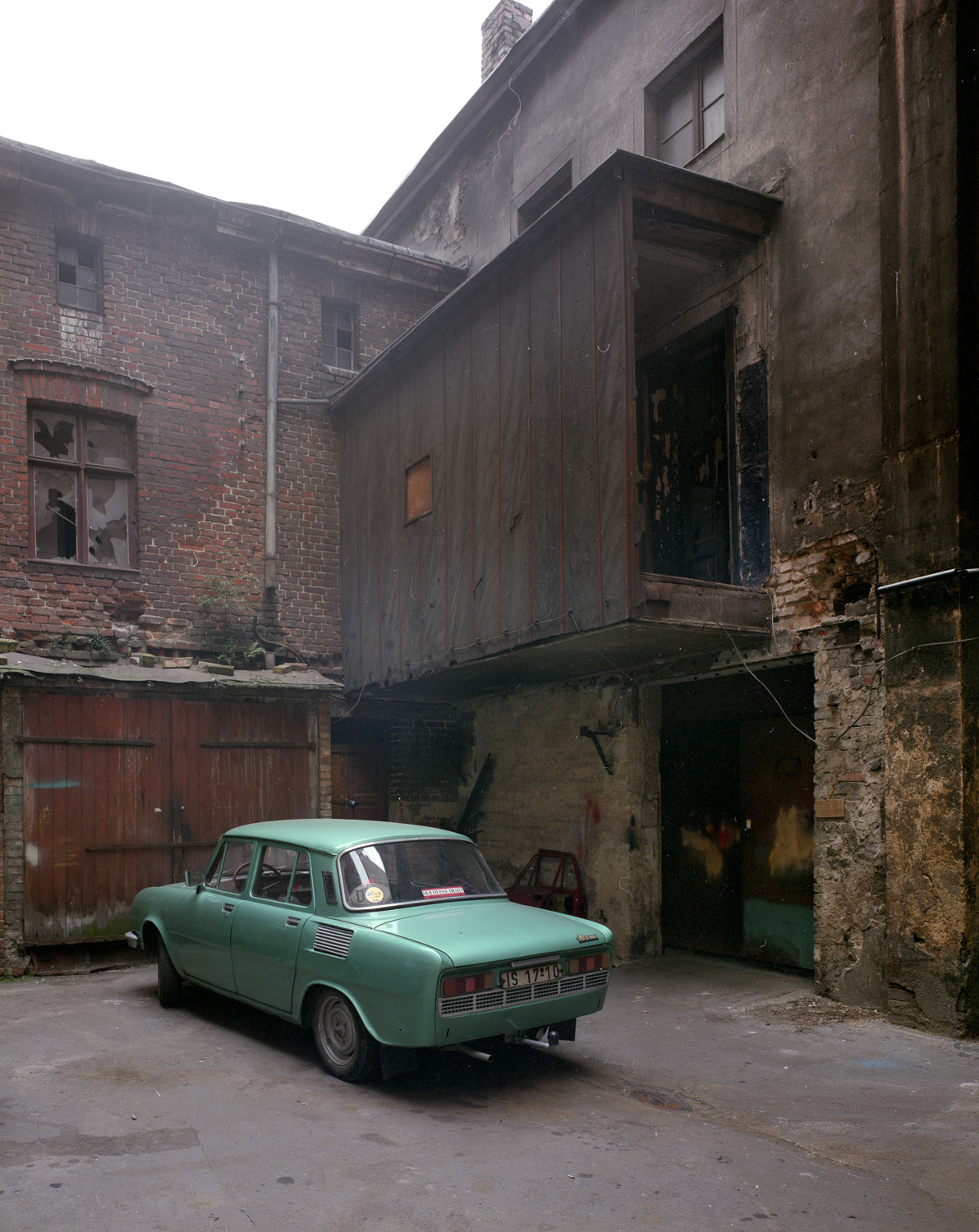
Eastern cars were not nearly as diverse in type as all the different vehicles we see here, This is a Czech Skoda. Better than a Trabbi.
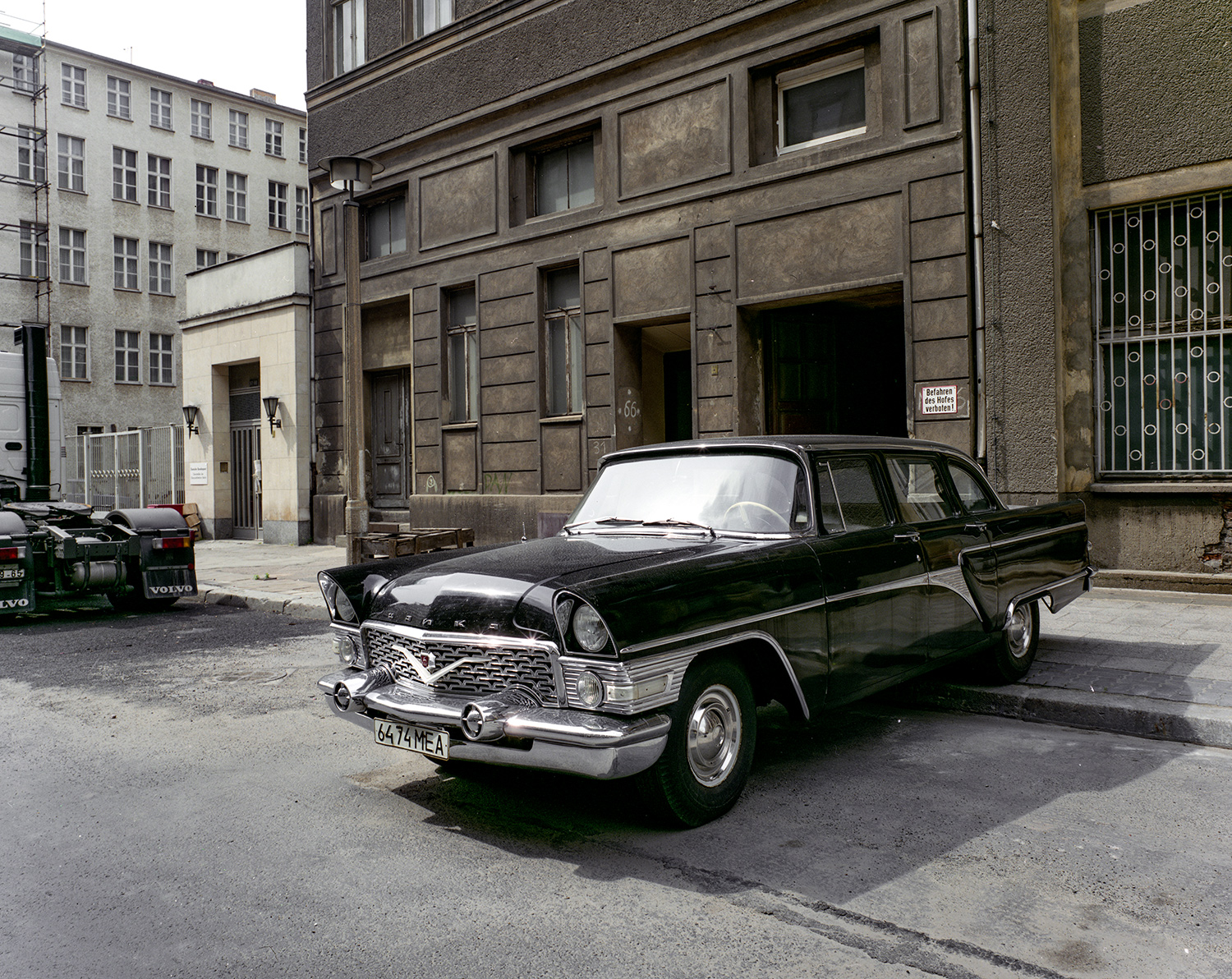
This car is a Chaika a Soviet product . According to Wikipedia it is a "a second tier limousine" of the sort reserved for official use and not for purchase by the general public. Looks suspiciously similar to a 57 Chevrolet.

A Trabant, or "Trabbi" the most common East German car, Two cycle engine and a composite body - not metal - which was like a cross between bakelite and masonite, brown and apparently flammable! Noisy, stinky and uncomfortable and . . . moreor less worthless shortly after re-unification as they were subject to an intense campaign to get the little polluters off the road.
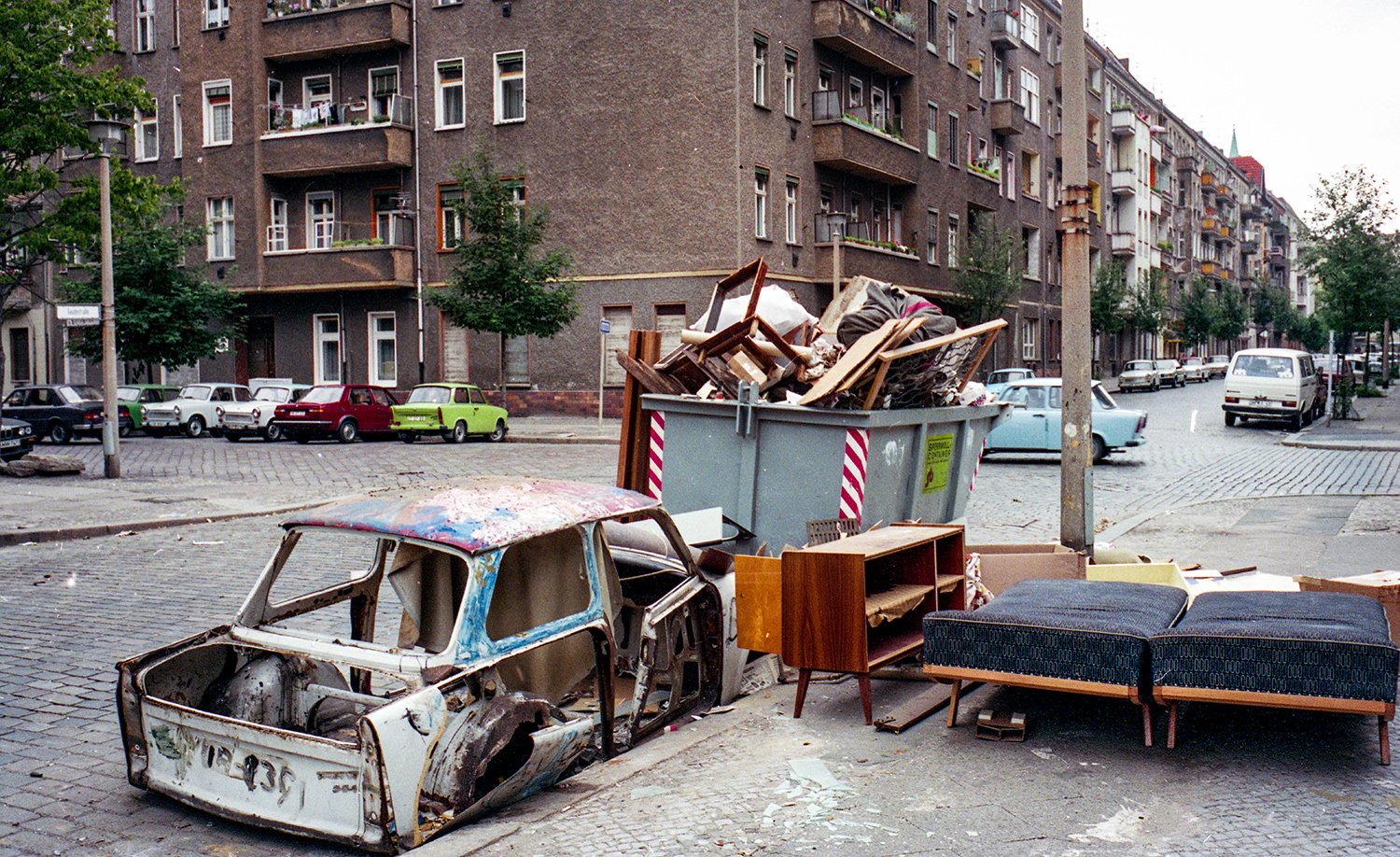
Trabbis . . . everywhere!
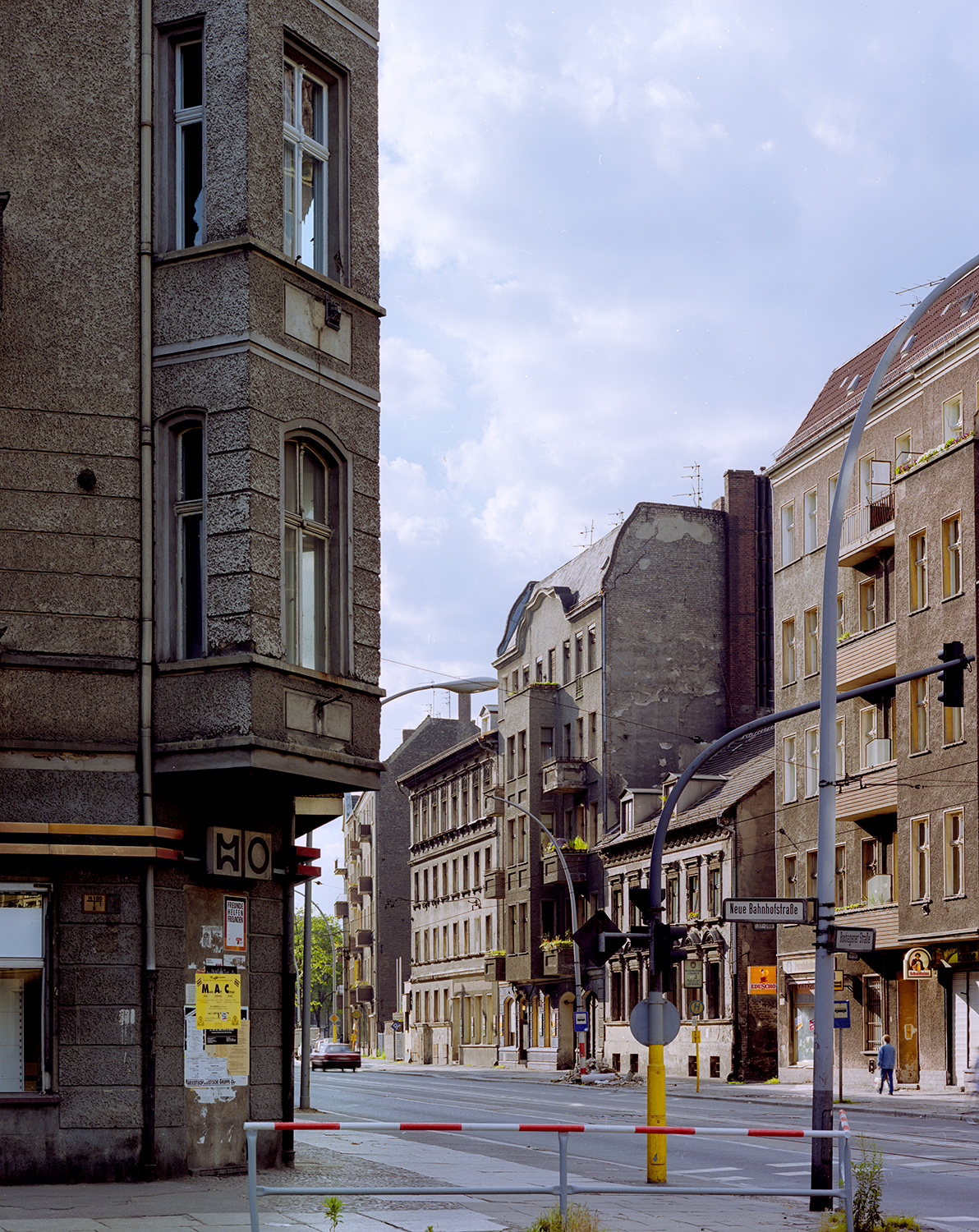
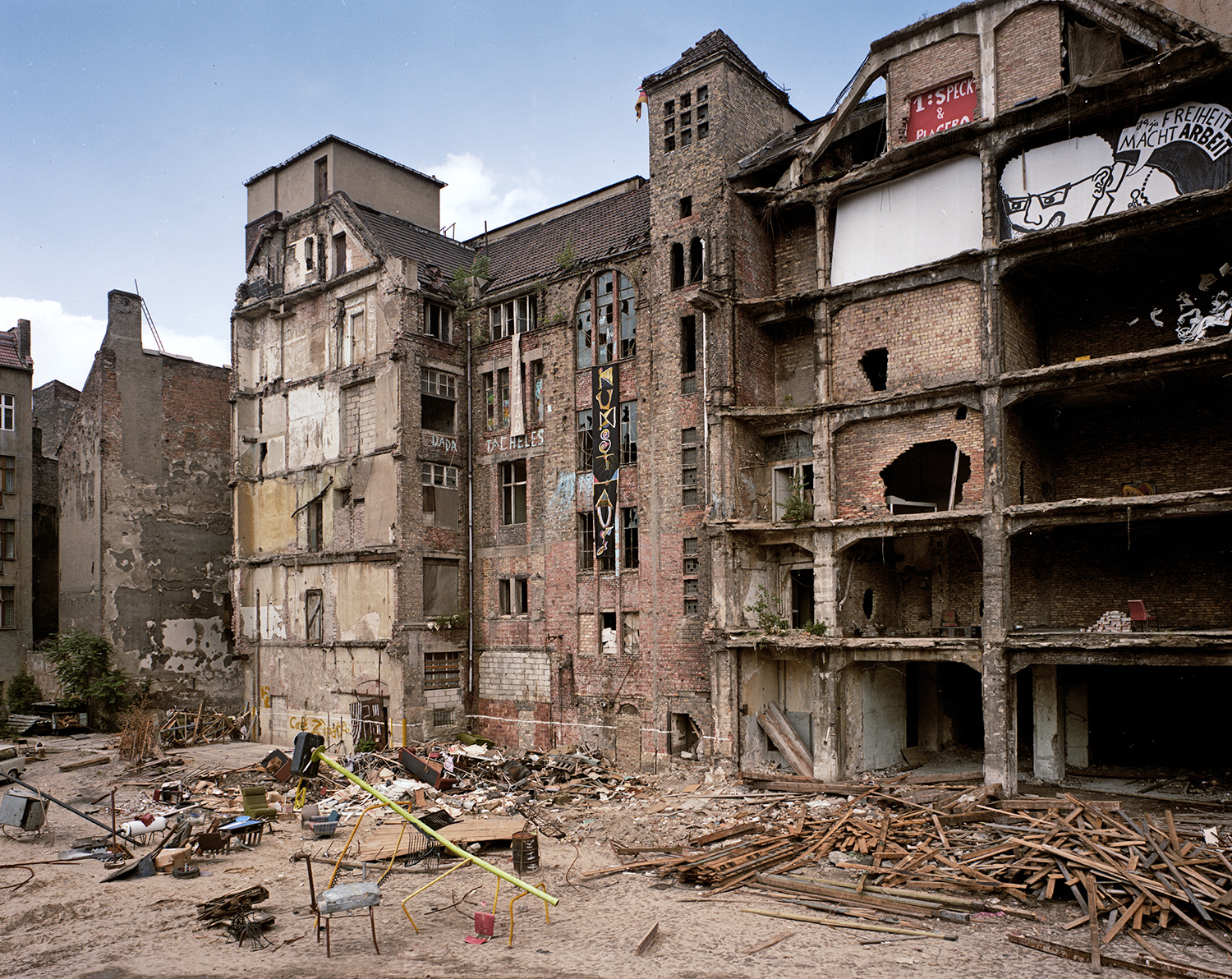
This is the rear of Camera Cinema in East Berlin, it was still in use as artist studios . 1990.
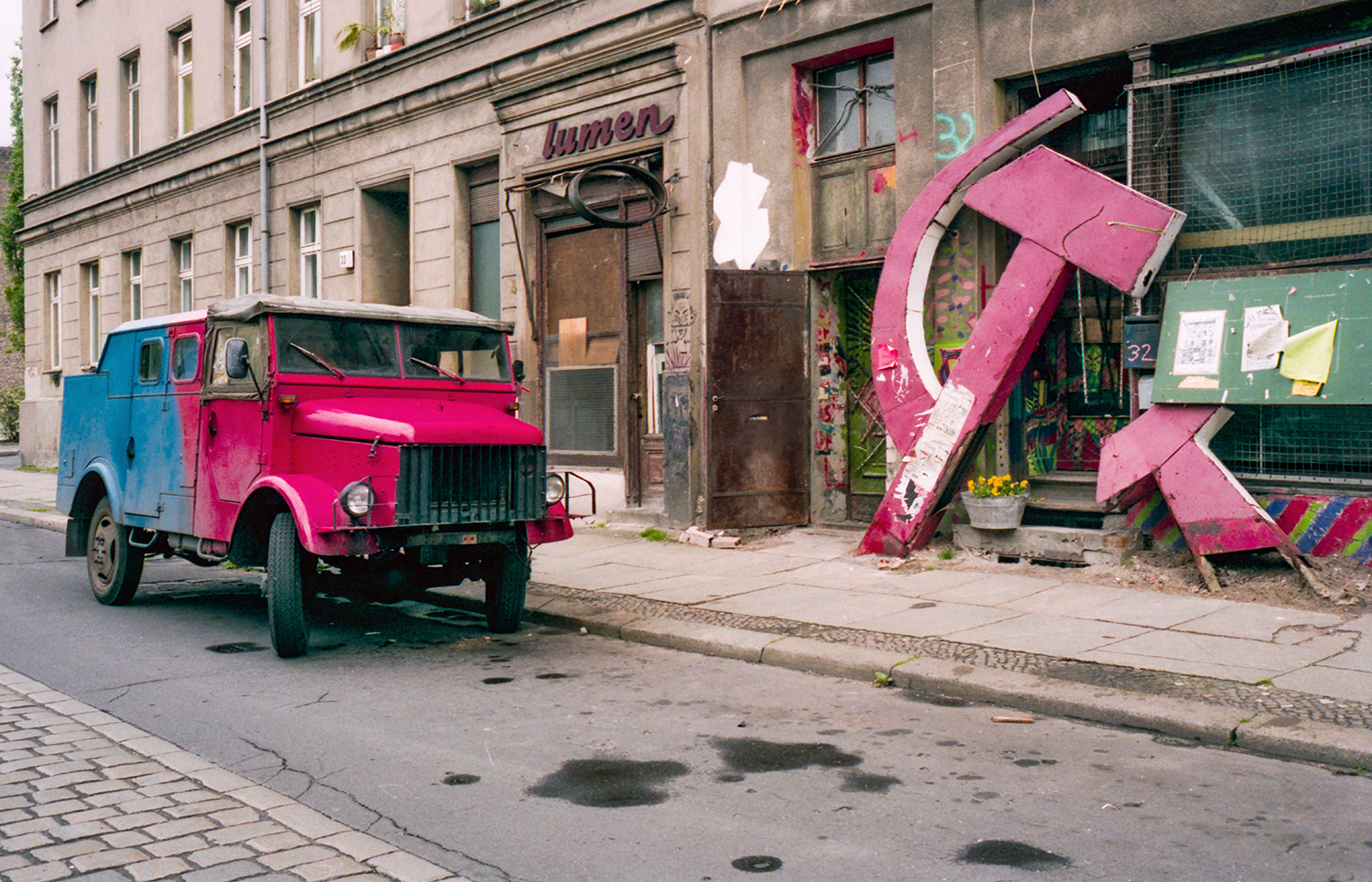
I believe the hammer and sickle was removed from the Peoples Hall, at the time of the photograph it was in front of a squat. May 1990.


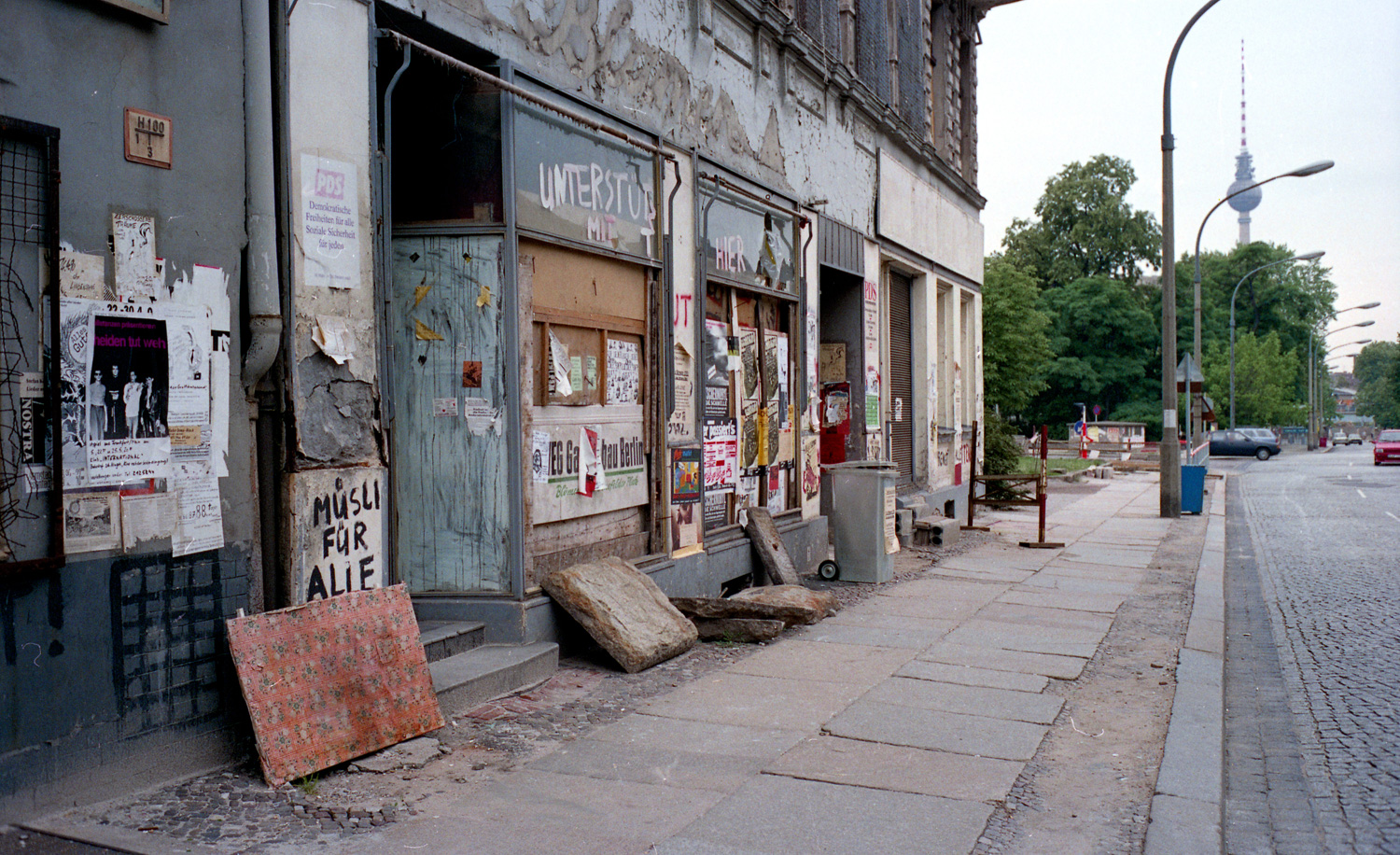

The wallbehind Martin Gropius Bau.
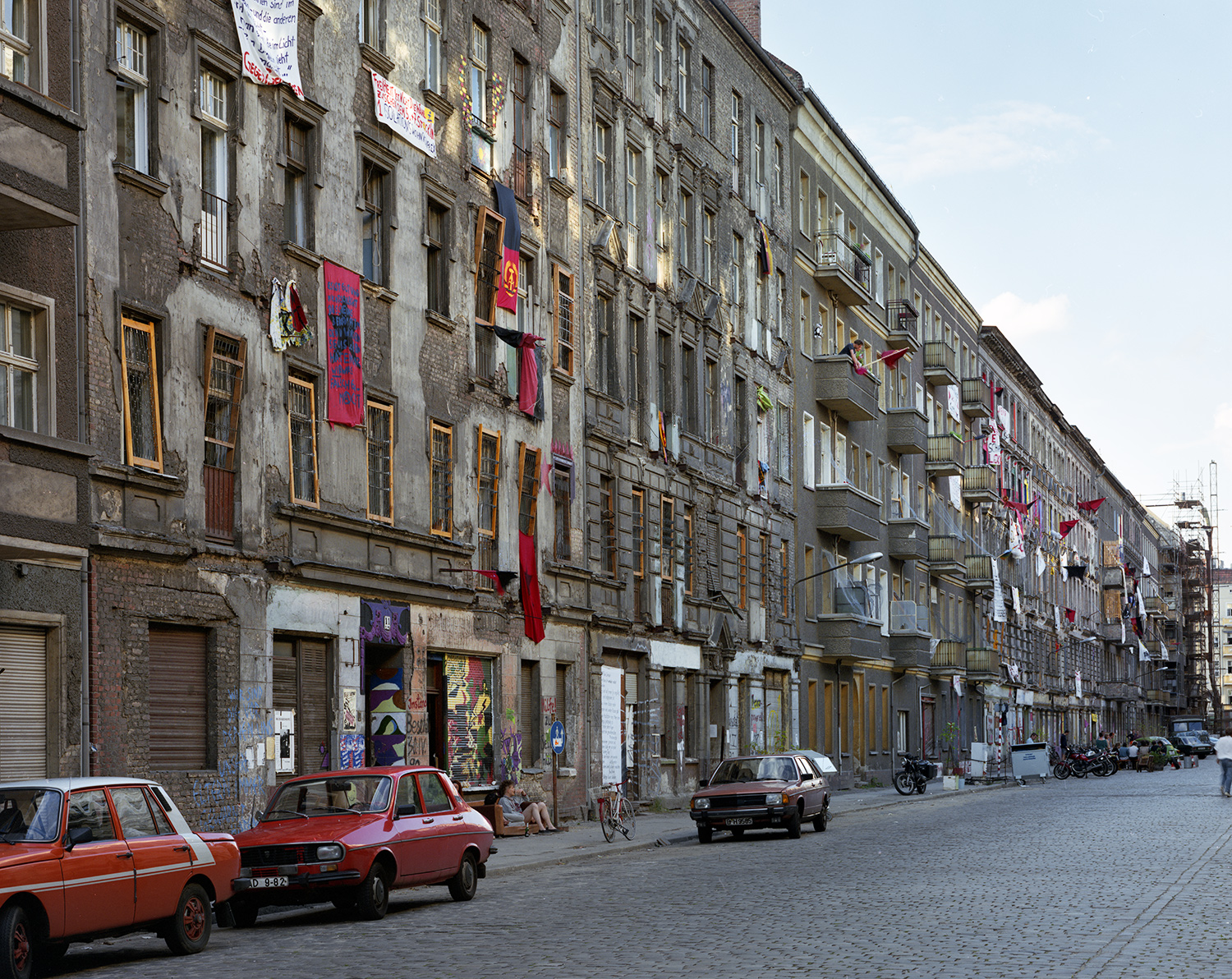
A row of Squats in Prenzlauerberg East Berlin May 1990


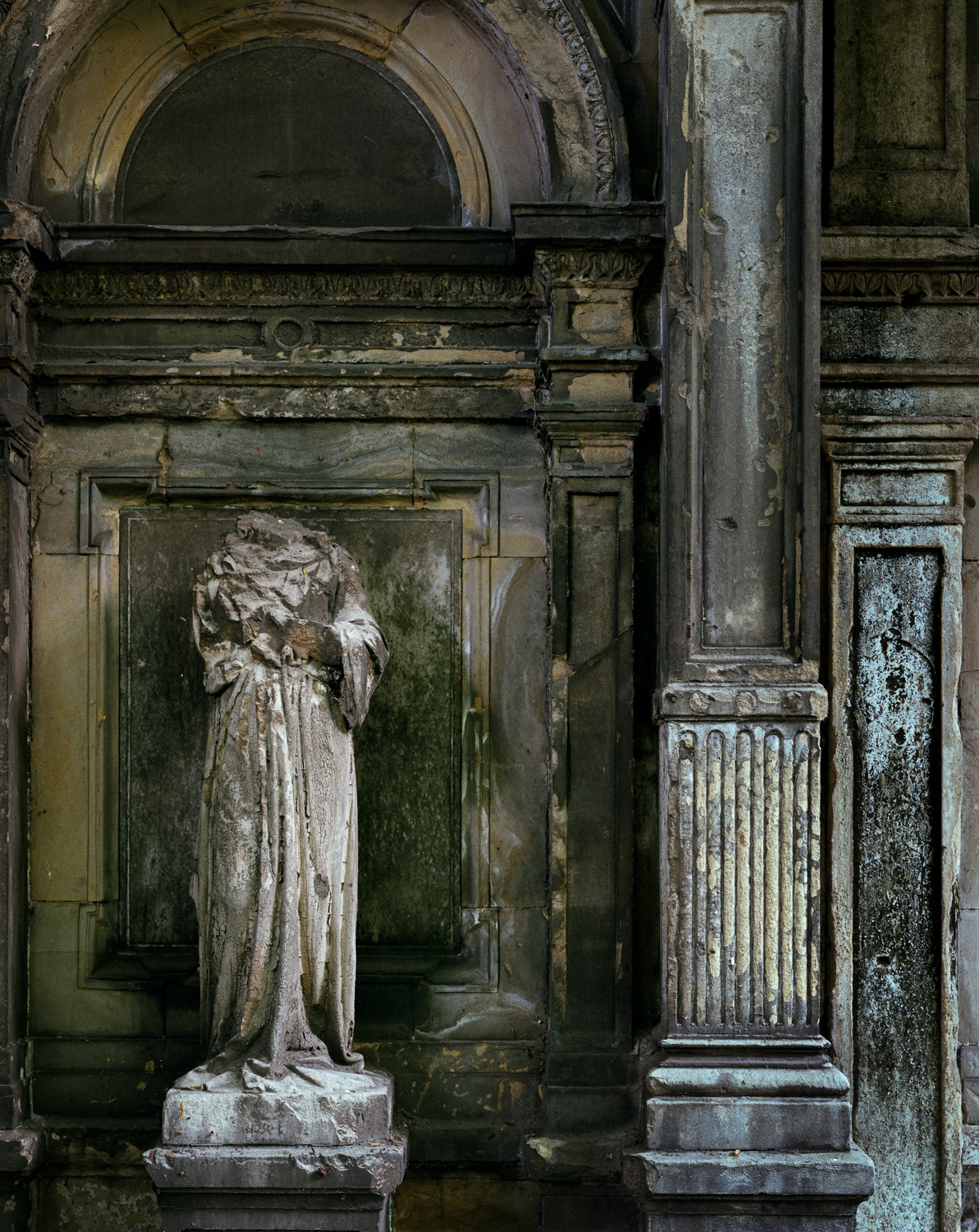
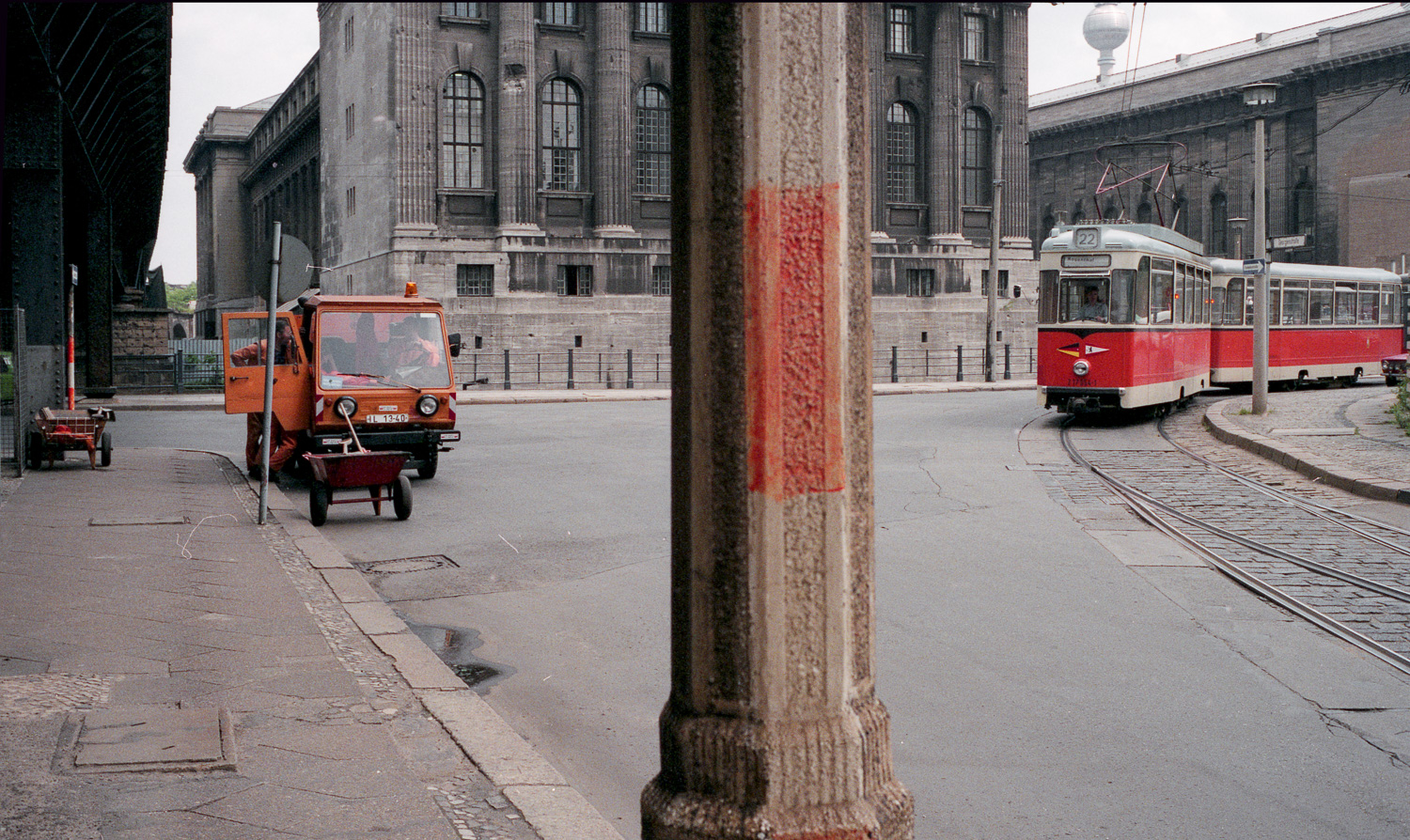
Georgenstrasse, East Berlin looking towards Pergamon Gallery.

Georgenstrasse, East Berlin looking towards Pergamon Gallery. I think it is time the bullet holes were patched on the left.
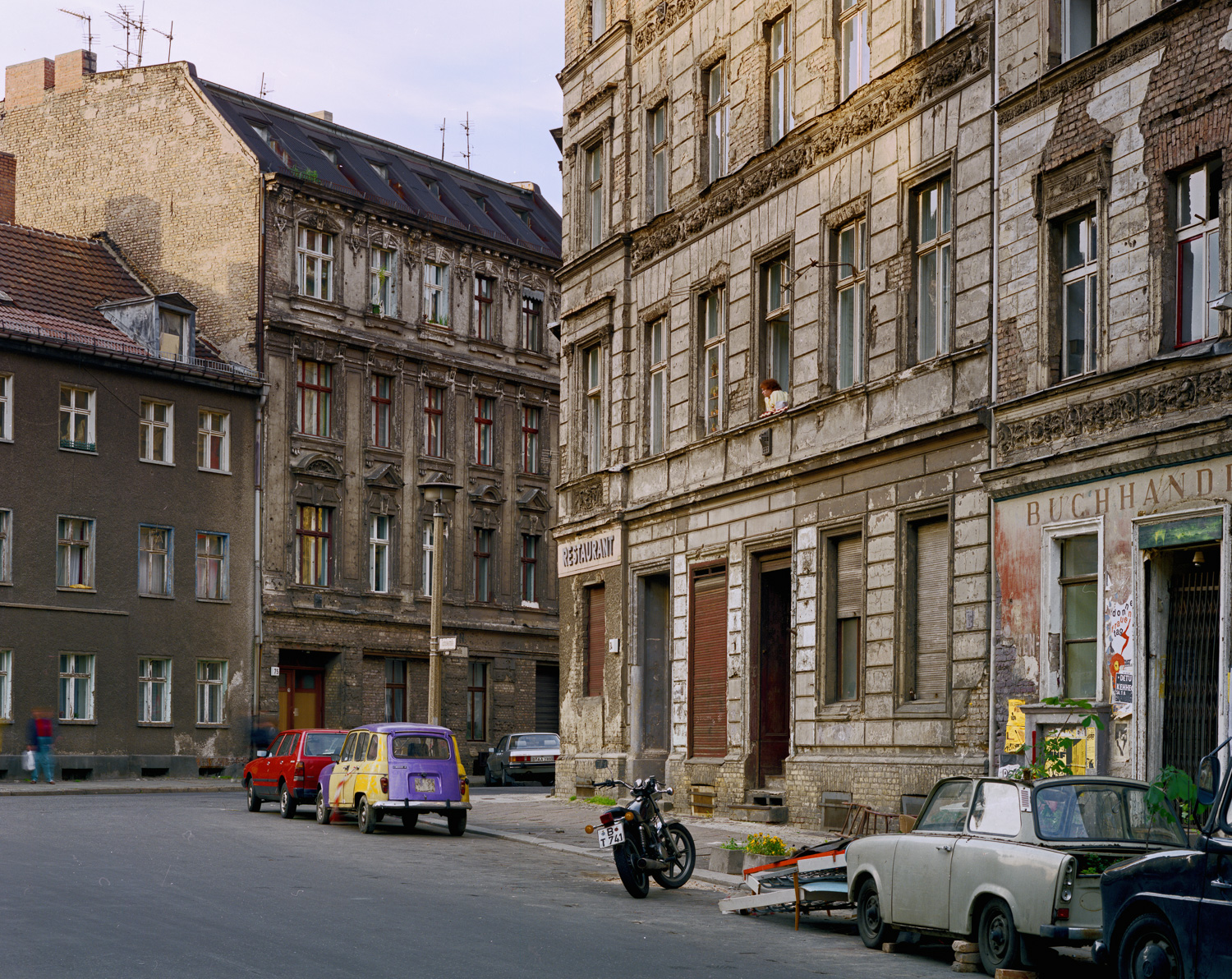
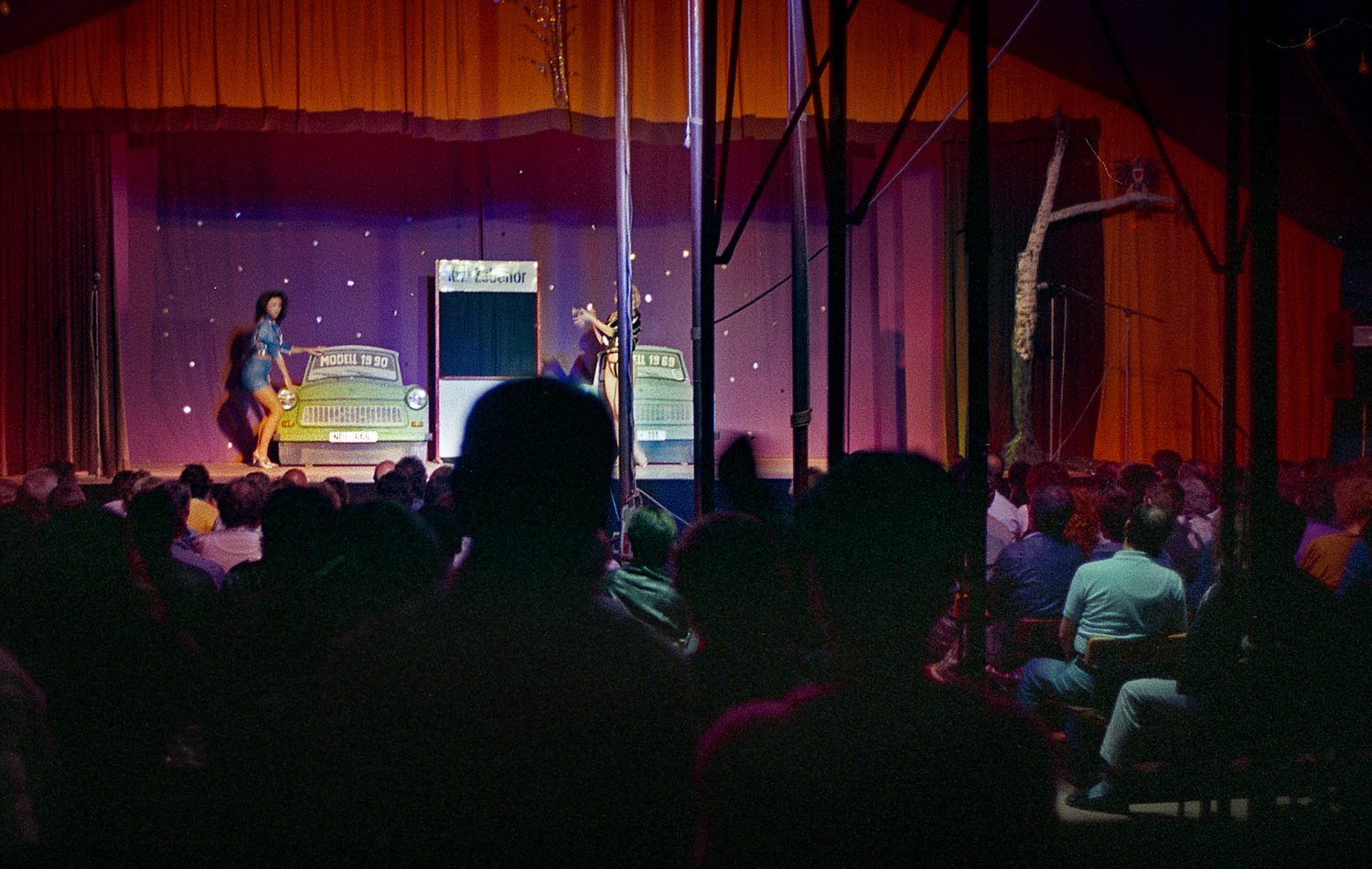
A satirical burlesque comedy show in a tent near the Sport Stadion. The skit was based on the 1990 Trabi versus the 1969 Trabi - lots of new features eh? Exactly the same car- but that is progress in the DDR - that was the joke. Dark in there. Berlin 1990.
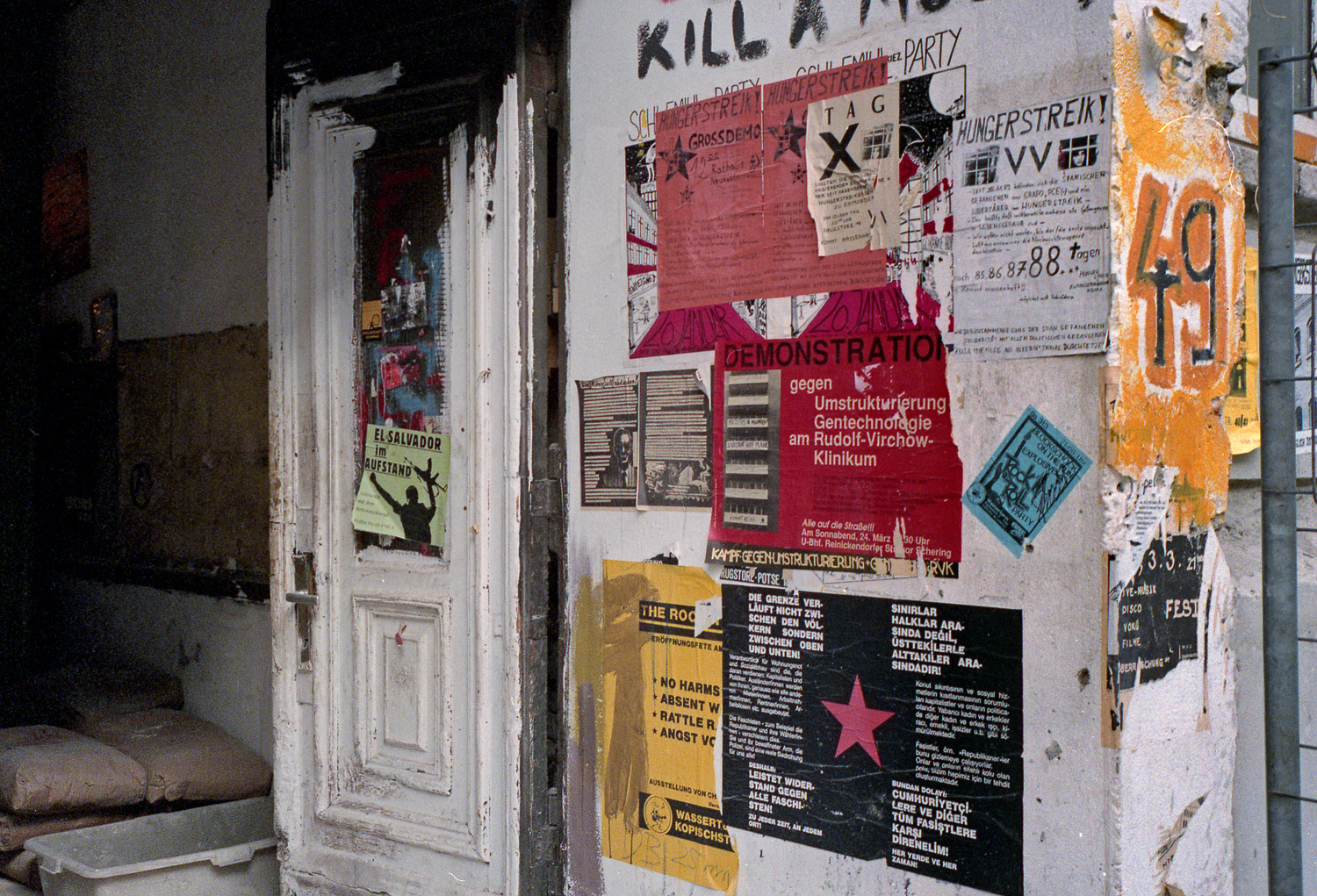

This crowd is in Alexanderplatz in East Berlin one or two days before East German money was no longer useful as currency. The people in the plaza are changing money by exchanging cheap east bloc consumer goods for western cash . It was not unusual to see someone with a roll of East German Marks that was nine or ten centimeters in diameter. The largest denomination in DDR currency was 100 marks and the value of those marks was in free fall the last few days. All ddr citizens could convert 4000 marks at par, investments and other monies above that were traded at 2:1 and last minute speculative monies only traded at 3:1. Crazy days.

People lining up to open a new bank account - Late June or early July East Berlin.


This woman is named Melina and she worked regularly as my assistant when I needed to take gear on location. This image was taken in the front room of KUPRAC a community gallery which I used a a portrait studio for awhile.Today, I cringe at the errors I made technically, mixed light, backlighting, , reflections.
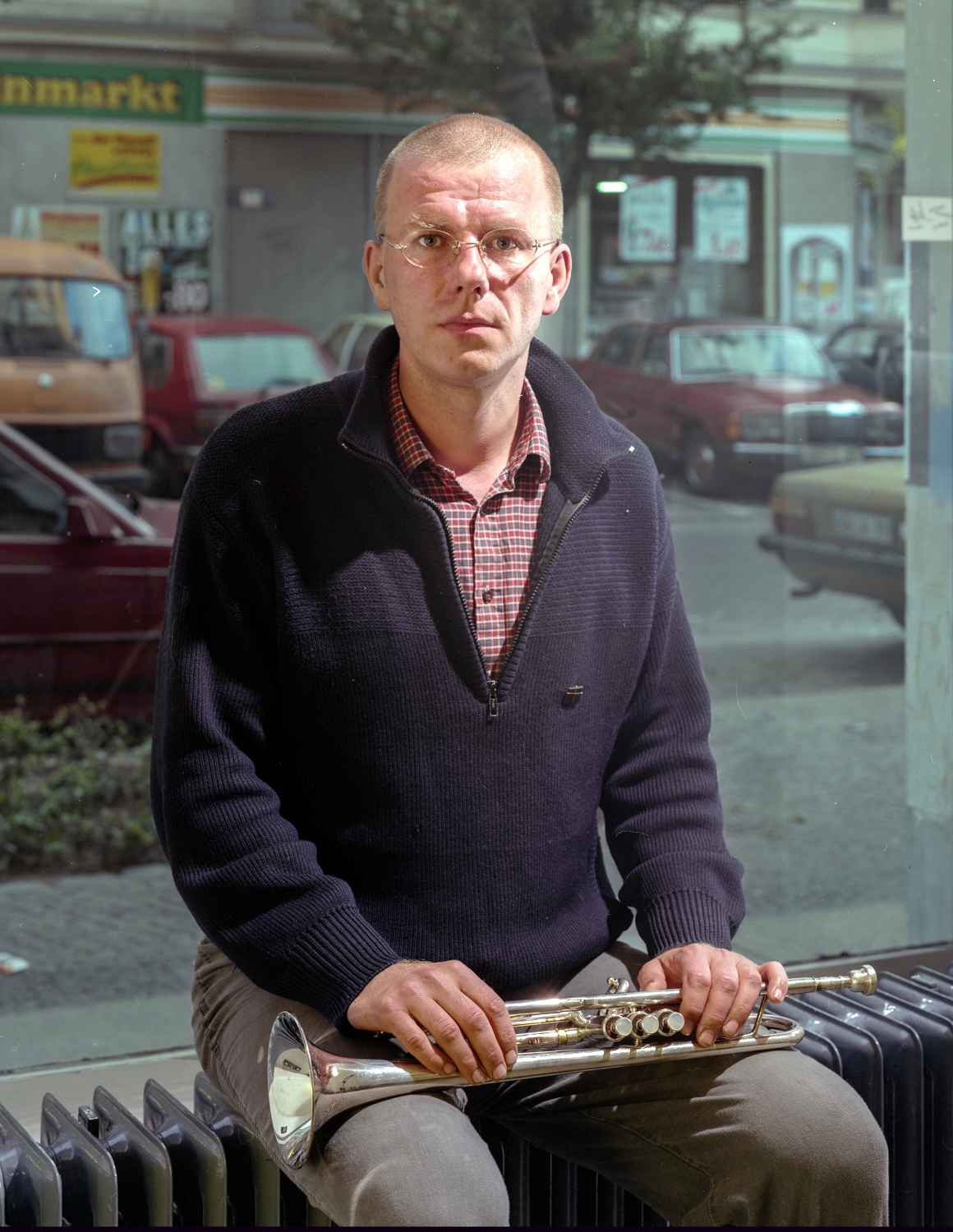
Matthias, Trumpet player, amateur philosopher.
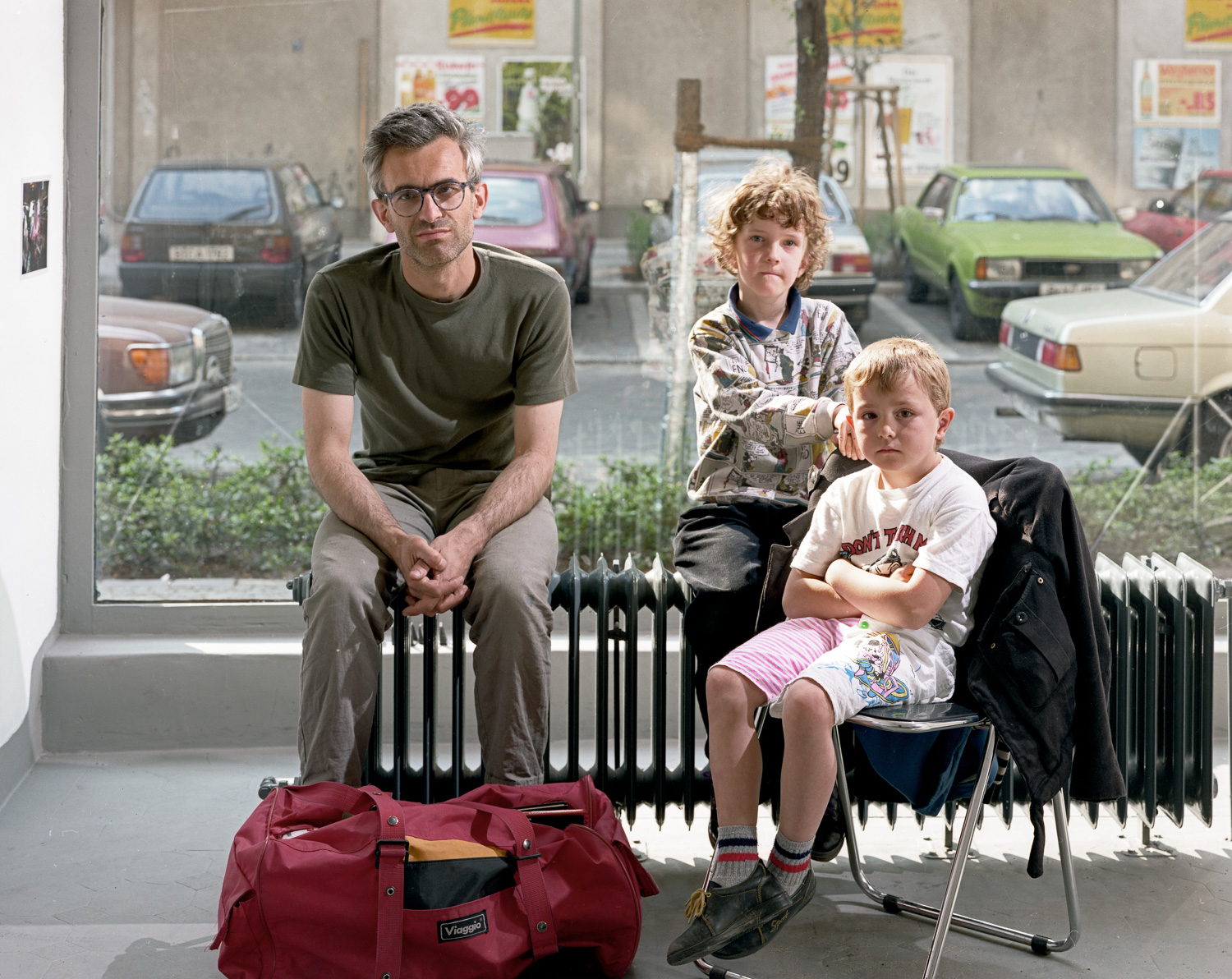

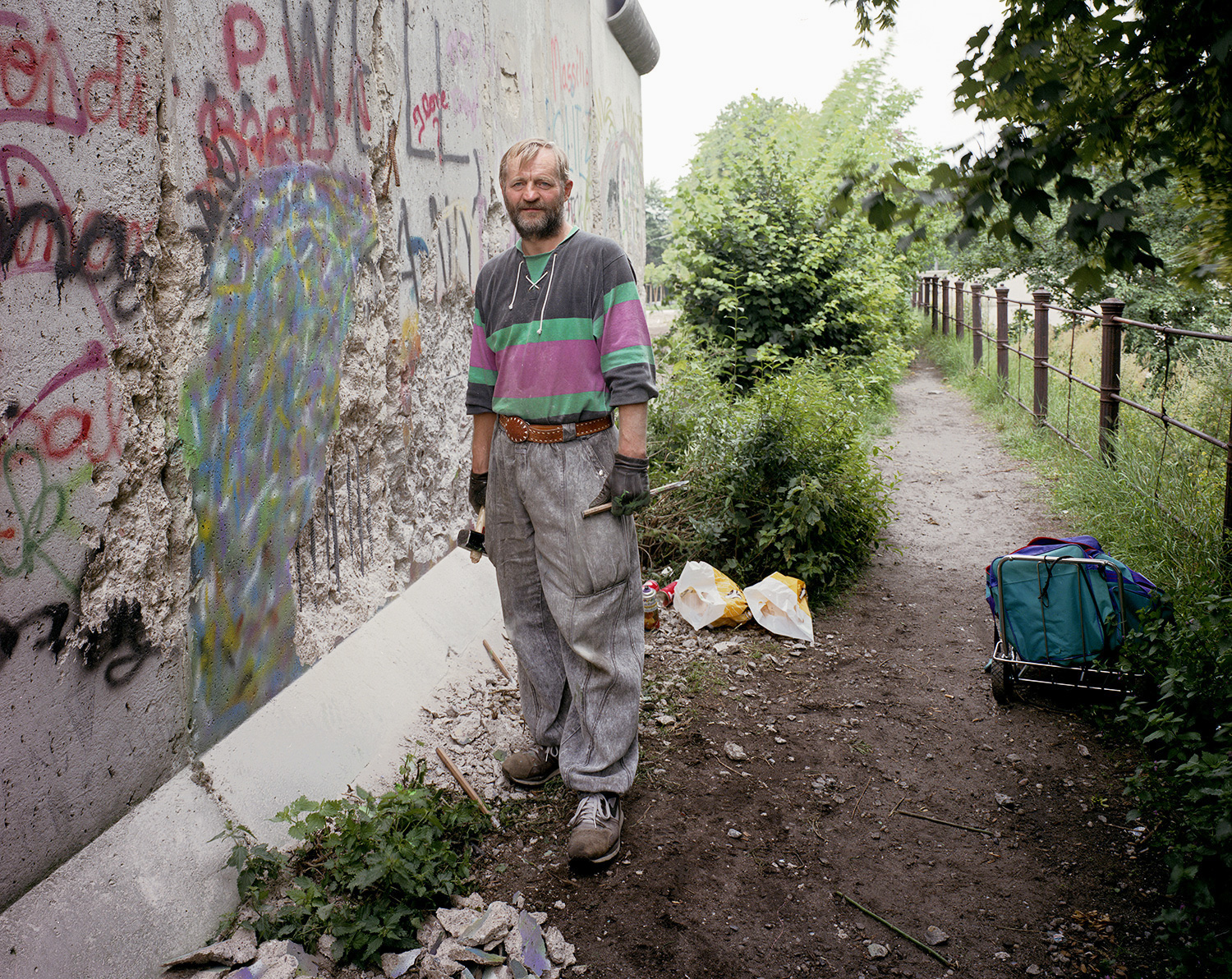
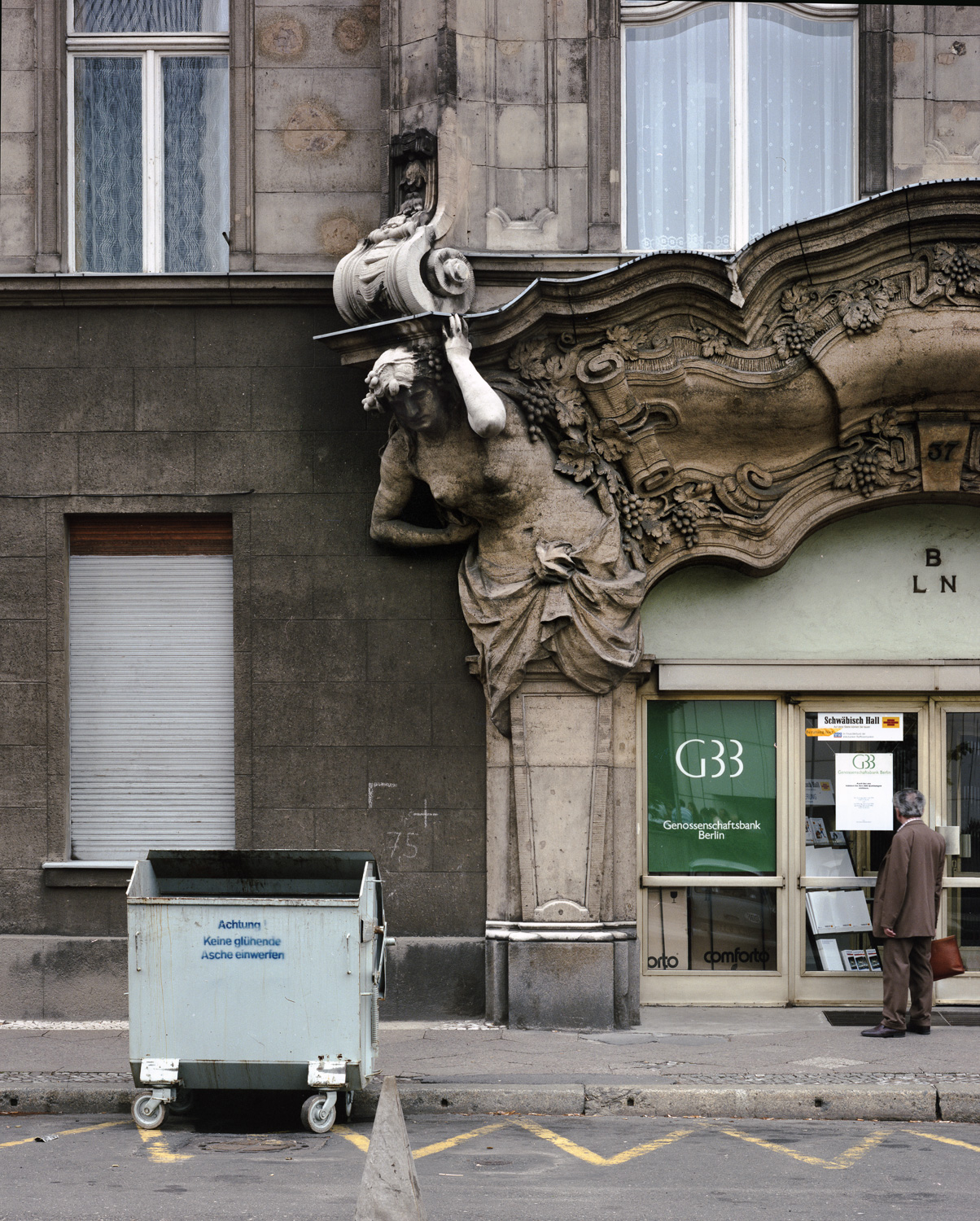

This is the front gate to Sachsenhausen concentration camp at Oranienburg near Berlin. Judy and I wound up here almost accidentally as we were just on an afternoon outing to get out of the city. The camp allowed visitors and had an East Bloc emphasis on the history it told, especially in regards to communist victims of the Nazi regime. This camp continued to be used after the war by the Russians until 1949.
Write here...

Sachsenhausen. Autopsy table with a view to the parade grounds.

Sachsenhausen.



























































A commemorative coal briquet , or perhaps an award of some kind?
This is my wife Judy Settle standing before a mural by Max Lingner (1952?) which is on an exterior wall of Detlev-Rohwedder-Haus in East Berlin. This building was the location of the Air Ministry in the Nazi period, and later the Treuhand which was the overseer of privatization during unification. Berlin 1991.
A dramatization of a commonly seen bit of grafitti, grafitti seemed to be a blood sport and there was very little "Art" graffitti to be seen. It was always about territory and politics andvile nationalistic messages were common (Auslander Raus - foreigners out!)
Of course, this is a set up. The montage on the television refers to the "Go wild west" slogan attached to the cigarette brand, the man with the money pasted to his forehead is an illustration from a magazine article discussing the economic changes taking place during the unification of the two German nations. There are many ways to look at the change, it could be thought of as a purchase of one economy by another as well as other things. The stuff on the wall is pretty well all east german nostalgica and kitsch put up for the shot. 1990 Berlin.
A little docudrama - two men changing money near the wall behind Martin Gropius - Bau. Berlin 1990.
A North Vietnamese unlicensed cigarette vendor. When the DDR collapsed there were many Vietnamese people who "fell between the cracks" . Not German, not citizens and visibly different. This man is modelling for me for a fee.
These are people acting out a an often seen role - beggars from the East Bloc who are not Germanwho represent the kind of people often blamed for many social ills at this time as people from the east bloc migrated west. I am paying them in this shot to pose for the next picture. There was a lot of media BS about the perils of people like this and I wanted to subvert that by setting up a shot to declare - at least in part - the falsity of it.
The family is now shown without myself as director of the scene.
This is not real, but it is based on an event I witnessed. These are actors. One evening I saw an awful beating which I could do nothing about and that I was quite distant from. I took pictures of it but the images are useless - they were soccer toughs - probably drunk - and like the cowards they were attacked in a group and kicked the daylight out of some poor man and ranaway. This picture was/is an aide memoire and an attempt to wrestle with that.
My friend David was a "junk remover" permitted onto the Stasi headquarters at 15 Normanenstrasse and I accompanied him as an assistant with a camera. This image shows David knee deep in a dumpster full of bureaucratic junk, forms, photographs and a wealth of other interesting things.
The desk of Erich Mielke Minister for State Security DDR.
"What is to be Done?" Erich Mielke, the last head of the Stasi , the East German Ministry for State Security, had an office filled with mementos, ceramic figures commemorative objects and awards related to his office. I managed to photograph a few . . .I was amazed at the Minister's poor taste in bric a brac.
Another bit of fine ceramics from the Minister's office. For the protection of the airspace of the good old DDR.
More stuff I saw displayed in Erich Mielke's office. The medallion image is of Felix Dzerzhinsky the founder of the Russian Cheka and a defender of the necessity for a strong security apparatus. A motto associated with him is "trust is good, but control is better". No context or inscription, I handled it gently and somewhat fearfully. !990 , Normanenstrassse Berlin
Near the Zoo train station downtown West Berlin.This man is selling cigarrettes and changing money.
"Cafe" at the Brot Fabrik (bread factory) studios in East Berlin , 1990
Alexanderplatz, East Berlin, late June 1990. Chickens for sale. In all likelihood these poultry were stolen from their intended retail outlet and diverted to Alexanderplatz where they could be sold for West German cash. The grocery stores win East Berlin were pretty well empty, not because of shortages but because of the impending obsolescence of East German currency and the effect that had on commerce.
Alexanderplatz, East Berlin. Late June 1990. Pornography sales out of the back of a van.
Cigarette salesman and Van - Potsdam. The introduction of new products to the Eastern market seemed to be especially visible in the street level campaigns run by Cigarette companies, porn and the banks.
Street corner with a kiosk poster I associate with 1990. West cigarette advertisements often appeared alongside the motto "Go Wild West".
Caol briquets dumped for later use as heating. Coal is an important fuel here.
S-Bahn Station Schonhauser Allée Prenzlauerberg East Berlin.
Eastern cars were not nearly as diverse in type as all the different vehicles we see here, This is a Czech Skoda. Better than a Trabbi.
This car is a Chaika a Soviet product . According to Wikipedia it is a "a second tier limousine" of the sort reserved for official use and not for purchase by the general public. Looks suspiciously similar to a 57 Chevrolet.
A Trabant, or "Trabbi" the most common East German car, Two cycle engine and a composite body - not metal - which was like a cross between bakelite and masonite, brown and apparently flammable! Noisy, stinky and uncomfortable and . . . moreor less worthless shortly after re-unification as they were subject to an intense campaign to get the little polluters off the road.
Trabbis . . . everywhere!
This is the rear of Camera Cinema in East Berlin, it was still in use as artist studios . 1990.
I believe the hammer and sickle was removed from the Peoples Hall, at the time of the photograph it was in front of a squat. May 1990.
The wallbehind Martin Gropius Bau.
A row of Squats in Prenzlauerberg East Berlin May 1990
Georgenstrasse, East Berlin looking towards Pergamon Gallery.
Georgenstrasse, East Berlin looking towards Pergamon Gallery. I think it is time the bullet holes were patched on the left.
A satirical burlesque comedy show in a tent near the Sport Stadion. The skit was based on the 1990 Trabi versus the 1969 Trabi - lots of new features eh? Exactly the same car- but that is progress in the DDR - that was the joke. Dark in there. Berlin 1990.
This crowd is in Alexanderplatz in East Berlin one or two days before East German money was no longer useful as currency. The people in the plaza are changing money by exchanging cheap east bloc consumer goods for western cash . It was not unusual to see someone with a roll of East German Marks that was nine or ten centimeters in diameter. The largest denomination in DDR currency was 100 marks and the value of those marks was in free fall the last few days. All ddr citizens could convert 4000 marks at par, investments and other monies above that were traded at 2:1 and last minute speculative monies only traded at 3:1. Crazy days.
People lining up to open a new bank account - Late June or early July East Berlin.
This woman is named Melina and she worked regularly as my assistant when I needed to take gear on location. This image was taken in the front room of KUPRAC a community gallery which I used a a portrait studio for awhile.Today, I cringe at the errors I made technically, mixed light, backlighting, , reflections.
Matthias, Trumpet player, amateur philosopher.
This is the front gate to Sachsenhausen concentration camp at Oranienburg near Berlin. Judy and I wound up here almost accidentally as we were just on an afternoon outing to get out of the city. The camp allowed visitors and had an East Bloc emphasis on the history it told, especially in regards to communist victims of the Nazi regime. This camp continued to be used after the war by the Russians until 1949.
Write here...
Sachsenhausen. Autopsy table with a view to the parade grounds.
Sachsenhausen.